Gossage - the overlooked legend?
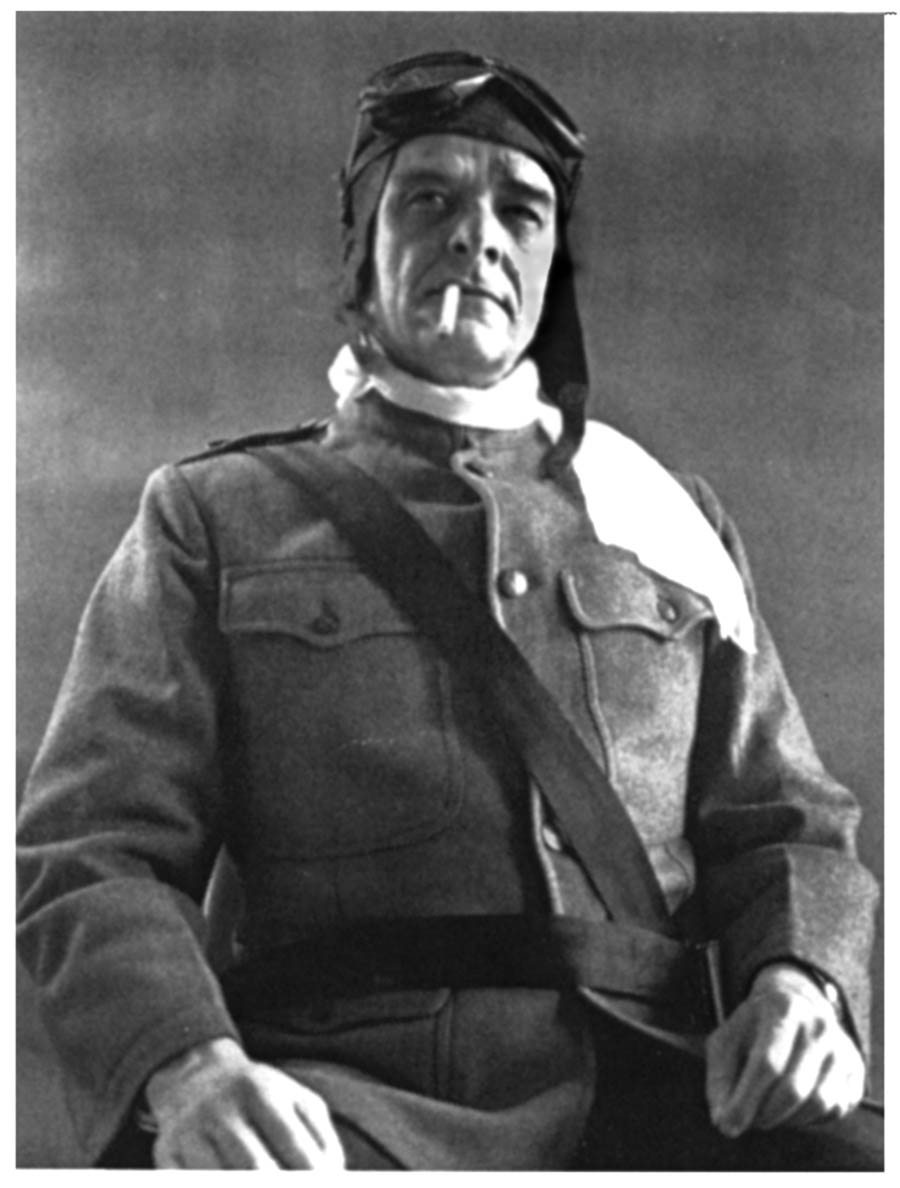
Howard Gossage posing for a Land Rover ad to promote seat belts on the basis that they made you look like a fighter pilot. Image courtesy of Adbuzz.
I have always felt it’s important to honour and respect the legends of our business. The Ogilvys, Bernbachs, Abbotts and Hegartys. Whatever one might think of their work now its clear to see that they were revolutionaries on their own times.
Gossage came to advertising relatively late, founding his own agency in San Francisco aged 37 in an old firehouse in Chinatown. While Bernbach was making a stand against scientific advertising (or sciency advertising as Douglas Holt calls it) on the East Coast, Gossage took it head on in the West but with an output far more unusual and quirky. In away it puts me in mind of an HHCL of the sixties especially when you consider ads like the one for Fina Pertroleum in which he announces that they are to introduce pink air to inflate your tyres in a snub at the way other oil companies were constantly advertising strange new additives to their fuel. The Fina ads have the best call to action of all time in the sentence “The next time you are driving down the road and the station is on your side so you don’t need to make a U-turn and there aren’t six cars waiting and you need gas or something, please stop in”. He was also particularly fond of giving away stuff (like one size fits all Beethoven sweatshits for Rainier Ale) and his legal copy is a wonder to behold. The LA Creative Club has a wonderful sampler of his work here.

Howard Gossage's ad for the Sierra Club put an immediate stop to the US Government's plan to flood the Grand Canyon. Image courtesy of Bachspics.
However, he not only tore up the advertising rule book, he also was enormously influential beyond the world of communications, not only introducing an obscure Canadian academic called Marshall McLuhan, to a wider world but also helping to create Friends of the Earth having successfully opposed the plan to flood the Grand Canyon. As Gossage said “changing the world is the only fit work for a grown man”.
Anyway this story has also captivated a guy called Ashley Pollack a creative director and filmmaker who is making a feature length movie about Howard Gossage’s life. This is the trailer.
The Socrates of San Francisco: Howard Luck Gossage from ETIO on Vimeo.
However, the film is not quite finished so Ashley is also trying to raise £50k through the film and ideas funding website IndieGoGo. We wish Ashley well in making this cultural legend a little less overlooked.
Why I hate targeting

Image courtesy of Rebecca Ellen
I have always been deeply suspicious of targeting in advertising.
I don’t really mean the practice of placing communications, engagement and utility into the lives of the people most likely to buy. That does seem pretty sensible. No, the thing that bugs me is an obsession with targeting and optimisation that either elevates this above the quality of what you create in that ‘space’ or sees it as the holy grail of advertising. Because the reality is that the theory of targeting is always far more compelling than the reality of it.
I have always worried that over optimisation can lead to long-term brand and business damage because tomorrow’s prospects are never primed. Indeed this kind of targeting seems to have the primary effect of driving a brand underground where only those people thoroughly acquainted with it are ever touched. Loads of brands could absolutely do with a big dose of wastage so that a broader audience feels their presence – that’s one of the enduring joys of outdoor as a medium.
Then I got mildly concerned about the concept of addressable advertising that was ushered in by the set top box. This promised the ability to serve TV advertising at the postcode level using profiles of those areas to make sweeping generalisations about the audience viewing. The prospect of mainstream advertising becoming as irritating as database driven marketing filled me with horror but fortunately this doesn’t appear to have got much further than titillating the geeks at technology conferences.
But the thing that really gets my goat right now and is cut from the same presumptuous and arrogant cloth is search driven digital display. Clearly a whole bunch of people at digital agencies, client marketing departments and places like Google are cock-a-hoop at the cunning wheeze of serving you ads for things you have searched for recently. I mean why wouldn’t they be since they are all disciples of the targeting cult? Don’t get me wrong I understand that the idea of knowing what people want to buy before you serve them an ad is genuinely revolutionary. Or at least it would be if it actually worked.
The trouble is that all targeting makes assumptions about people and the harder that you try to make them the greater the likelihood that you will fall flat on your face.
John Lewis are up to it right at the moment. I recently searched for children's pyjamas on johnlewis.com and so they are currently using their display to serve me advertising for children's pyjamas, suggesting pyjamas that I might like to buy. Constantly. I can’t get away from advertising for children’s pyjamas. The problem is I made that search and bought the pyjamas two weeks ago. I don’t need any more children’s fucking pyjamas and it’s starting to get on my tits. Someone somewhere thinks they are being bloody clever but actually they are being fucking dumb and in attempting to target their advertising so well they are wasting their cash and pissing off their customers. Its like a digital equivalent of stalking or what it would feel like if you popped down John Lewis and bought something and then some bloke arrived at your doorstep two weeks later trying to flog you exactly the same thing.
You see the ultimate problem with targeting is that for all the assumptions the hardest thing to do with any accuracy is to tell when people are in the market and why they are there. You can’t know that and the more you try the more irritating you become. Direct mail was bad enough but digital takes it to a new level of annoyance. To bastardise John Lewis’s endline this is advertising that appears to be never knowingly relevant.
Positioning versus execution - why the BA ad is not shit

Image courtesy of Mike 926
I have just finished reading Creative Mischief by Dave Trott. I think its really rather good. He is a first rate storyteller with a no nonsense approach to business, brands and communication. He reminds us that we can get too obsessed with the new and newfangled and bypass common sense – you could read a load of stuff on neuroscience or simply remember that when selling its quite a good idea to create desire and give people permission to buy.
Anyway one of the chapters – they are actually more like blog posts and probably were – is about the way in creative awards juries everyone is so subjective about the work. You either love it or hate it and no reason need really be given why. Trott complains that this is hardly a professional way to respond to the output of the industry. Its fine for normal people to think stuff is great or shit but not practitioners. We need to have a more objective and measured approach to critiquing work.
Which brings me to the new BA campaign – to fly to serve – by BBH.
I literally can find no one on this good earth that has a kind word to say about this work. I suspect that it hasn’t been turkeyed by Campaign magazine only because that’s very much against protocol where BBH are concerned – it would be like swearing in front of the Queen. Everyone thinks this work is shit. Shit idea, shit production values, shit VO from the Mastercard bloke that used to be in This Life and shit music.
Well I think this response smacks just exactly of the lack of professionalism of which Mr Trott speaks. Because it’s not shit, this campaign is precisely what the brand needed. Don’t get me wrong, it would have been better if this work had been made with any sort of executional panache but that alone doesn’t make it he wrong thing to have done.
Putting the BA pilots on a pedestal and invoking the power of the motto ‘to fly to serve’ is exactly the right approach. This after all is a brand struggling to elevate itself above the competition (or maybe even approach their altitude) that has suffered from a gruesome industrial relations episode and is up against the likes of Virgin at the cheeky chappy end of things and Emirates on the ring-a-ding bling end of things.
You see if I was having a go at the BA problem I'd start with the idea that Britain is no longer proud of BA, that its broken that bond and needs to get it back. Starting a journey on the back of the pilots feels like a smart way to go about this - assuming that there are some real changes afoot at the airline.
Indeed at a push I might almost call the campaign a 4th Emergency service kind of approach to positioning the airline. Because making successful work is not just about the pretty pictures, shock horror, its also about the means by which people change their behaviour in a category and that’s not down to executional prowess.
All of which puts me in mind of a little trick that the ex-HHCL planner Dave O’Hanlon taught me. I know I have talked about this before but it remains very handy in these situations. When you come across work that you hate, imagine that someone then pipes up that it is working brilliantly and then work out why on earth this might be given you dislike it so much.
Now that’s the kind of professionalism that even Trotty might appreciate.
Hegarty on Advertising
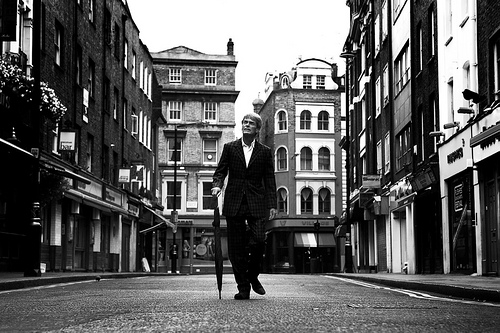
Image courtesy of Johnnie Walker Espana.
“Do not go gentle into the good night but rage, rage against the dying of the light” Dylan Thomas.
Sir John Hegarty’s thoughts and memoirs, packaged together in Hegarty on Advertising (Thames and Hudson), must be amongst the most eagerly awaited stories from the World of advertising. This is a man who, in a career spanning nearly 50 years, has given us some of our most loved and successful work, helped build immeasurable value into numerous brands from Levis to Audi and created what is undoubtely the most respected advertising agency on Earth. He is also a bridge. A bridge between the increasingly mythical world of late 20th adland – the adland of Bernbach, Collett Dickinson Pearce, the Brothers Saatchi, and today’s advertising landscape with its 21st Century angst, technological tsumani and procurement misery. So when Sir John, an art director by trade, puts pen to paper a degree of expectation is created and a degree of respect is due, which I offer in spades. But all in all it’s a curious work.
Hegarty on Advertising is a book in two parts which is strange in itself, either suggesting that the story of his professional life from Art School to head of the BBH Empire was not thrilling enough for the publishers or that his musings on subjects like creativity, ideas, brands and technology were not suitably substantial to make a business book in its own right. This is rather a shame because for people in ‘the business’ the story behind a legend like Hegarty is mesmerising, a reminder to all of us to get off our collective arses and raise our game. While for people simply in business the first section offers a perspective on issues that face any organisation from a man who they won’t know of but with whose work they will be intimately acquainted.
So who is the book targeting? Adlanders or a wider audience?
The truth is that adlanders will love the second section because it documents the cut and thrust of creating a legendary advertising brand (even if some of it is a bit airbrushed at times), not to mention an impressive collection of stories about a formative career. I particularly love the story about Charles Saatchi getting a picture of his creative department on the back page of the Times in 1972 because he had them insured for £1m and had instituted a transfer fee if any other agency tried to poach them.
But my guess is that what I’m sure should have been the meat, the first section will leave agency people a little cold. While Hegarty’s point of view on ideas, brands and audiences, agencies, creative directors, briefs, pitches, storytelling and technology are undeniably both right and important they seem very familiar. Reading them felt as if I had already absorbed what he had to say and this was a little like déjà vu. And then I realised that I had. Indeed it is impossible to have spent any length of time in the advertising business and not have taken on board John Hegarty’s perspective on these issues, such has been his profound effect on all of us whether we are aware of it and whether we live up to his ideals or not. What you and I know and feel to be true about our work at its best – the combination of intelligence and magic in advertising (the book's subtitle) – in many ways we know and feel to be true because of the influence of both Sir John and his agency. If any of what he says seems old hat that's because it's his hat.
And what are we left feeling about the great man? That he is a great man, a little doting about the agency he gave birth and life to but then what parent isn’t and a perfect gentleman. Indeed the irony of Sir John invoking the spirit and words of Dylan Thomas when talking about the need to fight mediocrity is that, within these pages at least he rages against very little. That is with the exception of two things. Two issues seem to rile Sir John so much that the mild mannered man falls away just twice as he erupts into powerful and visceral loathing.
Firstly about tissue meetings. Let us all agree right now that we hate tissue meetings, while created (by Jay Chiat in the US and HHCL in the UK) to help introduce and sell in more brave, interesting and difficult work once they were hijacked by the intermediaries that govern our world and act as the single most powerful means to dumb down work the advertising industry has ever invented.
This is Hegarty on the wretched tissue meeting “Have you ever had to suffer a tissue meeting? All of us in advertising have at some point, haven’t we? For those that don’t know what I mean, count yourself lucky!...Whoever came up with the completely stupid idea of tissue meetings should be taken out and shot. They are the invention of a predictable mind trying to make the unpredictable predictable. Tissue meetings were created to keep clients happy and to make them feel we are in complete command of what we do, which we’re not”. Well you’ll find no quarrel with that form me and I rather suspect the vast majority of right minded people in the business.
Hegarty also goes to some lengths to take issue rather brilliantly with fashion and fragrance advertising, largely for its obsession with style over substance. Once again the mild mannered adman that is on display in virtually every other page of the book falls away to be replaced by something far more interesting and powerful.
Here is what Sir John has to say on the vacuous world of perfume advertising “The fashionistas who’ve created this work have obviously looked up the word ‘profundity’ in the dictionary, thinking it spelt ‘pretentious’. These commercials are invariably shot in black and white because their brains haven’t quite grasped the concept of colour. But worse of all are the scripts. Now when you are writing a script, it’s best to have and idea – that small incidental phenomenon that drives communication. One dictionary definition of an idea is: ‘a thought or plan formed by mental effort’. I think the key phrase here is ‘mental effort’. Gelled hair and three-day facial hair growth are not ideas.”
He goes on to create and entire spoof script for a fragrance called Stalker from the house of cliché, so manifestly angry is Sir John about the world of perfume and fashion advertising.
And in those brief moments of visceral anger we perhaps hear the real Sir John. The Hegarty of tense creative reviews with his teams, the Hegarty fighting for great work against lacklustre people inside and outside his agencies, the Hegarty that has forged some of the most powerful pieces of communication the business has ever created and the Hegarty that tore his own work up for the Health Education Council brief when he saw Jeremy Sinclair’s Pregnant Man ad about to be presented to Charles Saatchi. In recording his ideas and life John Hegarty paints a picture of urbane gentleness but I think we all know that this is a man that has done all this precisely because he has so consistently raged against the dying of the light.
Hegarty on Advertising is published on the 13th June by Thames and Hudson
And here is my all time favourite BBH commercial. Was there ever a more perfect minute of storytelling, acting, direction and editing, not to mention the outstandingly good musical score? Enjoy.
The price of everything the value of nothing

Chateau Petrus, sadly the '78 is missing. Image courtesy of cDubya.
One of the key tenets of behavioural theory is that we value more the things for which we pay more. The more expensive the wine, the greater quality we believe it to be and the more that we value it. So how come this idea doesn’t seem to hold water when it come to clients and the value they place on agencies.
Theoretically the more money that a client is paying an agency the more you would think that they value the recommendations and output of that agency. But I wonder if precisely the opposite is true. That clients view the not insubstantial fee that they are paying not as remuneration for the quality of agency’s contribution to the fame and fortune of the brand but as a fee for a service. The sort of service that involves hanging on the client’s every word, taking any number of fruitless meetings with them, fluffing their individual and collective egos and having good and possibly great work rejected or unpicked until there is nothing of quality left. Much like her client pays a call girl to go out with him, listen attentively, make him look good in public and then pleasure him in the bedroom department.
Conversely, the clients that pay an agency nothing at all seem to value it far more highly and take its recommendations rather more seriously, so called pro bono clients. Now this could simply be out of gratitude for the time that the agency is investing for no financial return but I think it goes rather deeper than this.
Bizarrely, the less commercial the relationship the more professionally you are seen, as if the exchange of money demeans your engagement with the client, your sense of partnership and the objectivity of your advice. Unpaid, you are seen as truer business partners.
Is this unique to advertising? Are we the only industry where the greater we are remunerated the less professional we appear and the less like partners we are treated, as if clients are saying ‘well you’ve got your money, now do what we say’? I can’t see this being the relationship that McKinsey or Foster Partners enjoy with their clients where the cost of their advice is directly correlated to its percieved quality. Whereas hiring a great agency and then making them produce tat is rather like putting the Chateau Petrus 1978 in your spaghetti Bolognese.
Crimes against participation - part two

Image courtesy of freefotouk.
In the last post on participation I talked about the after thought issue that dogs many participatory campaigns and three easy steps to engagement heaven. I now want to deal with the second issue, the performing monkey syndrome.
The trouble with most participatory campaigns is that they simply ask too much of people. That is not to say people won’t go to extraordinary lengths to be part of something that you create but this happens only in exceptional circumstances and when the rewards for doing so make the effort worthwhile for that group. Over a thousand musicians learned the music for our Josh’s band project (part of the T-Mobile campaign) and then turned up in locations around the country to play it and record a single with him. Big effort but big reward for those taking part and a project that didn’t seek mass participation but used a relatively small group of participants to create more passive content for the broader audience. Gatorade Replay is of course another campaign that asked a lot of the original participants but still got the effort and reward equation spot on.
However, it seems most people designing participatory campaigns give no thought to whether the reward outweighs the effort – these people are the ‘task setters’. Instead of thinking about how best to inspire people or to help them through the brand’s activities, agencies and clients think only about the tasks that they can set for people as if they were performing monkeys. You can here the phrase “what can we get people to do?” echoing throughout the agency corridors rather than “how can we entertain people or give them something useful?”
And I wonder whether this is exactly the point.
In the good old days teams wrote TV commercials that they found funny, found pieces of music to use that they loved, wrote headlines that moved them and used art direction they found interesting. In other words they authored work for themselves rather than thinking too much about what the audience might find funny, entertaining, shocking or interesting. Then the rest of us would go off and find out if other people shared their tastes whether in the viewing facility or the real world. Outsiders constantly criticised creatives for writing for themselves, but that’s what worked its their instinct that led to the work we loved and love the most.
However, this instinct for what is good seems to be absent when it comes to building interactive campaigns. I’m not saying its totally absent, there are still really exciting campaign ideas coming out but they seem few and far between. Whether from lack of confidence or lack of experience this creative instinct doesn’t seem to be particularly prevalent in the murky world of participation. Task setters are far happier to demand actions and activities from people that sound cool but in which they themselves have absolutely no interest in taking part. It’s almost the complete reverse of the tried and tested approach.
The best participatory campaigns and activities seem to be those that involve people in ways the creative and account team personally couldn’t wait to take part in themselves. And to be honest that seems to be only useful test worth considering on these ideas - do I want to do that? Not would someone else want to do that?
And if you don’t, don’t ask anyone else to.
T Mobile - Welcome back
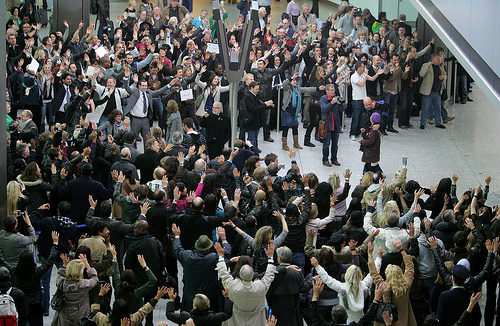
I have stopped posting work from Saatchi's on adliterate because that's not really what this blog is all about but I thought I had to put up the new T Mobile ad. Shot at Heathrow's terminal 5 on Wednesday, the three minute version launched last night on 80 UK TV channels in a simultaneous roadblock. It also embodies much of what we have learned in the last two years about participation which is perhaps a more appropriate post for this blog but perhaps another time.
Creating inspiring briefs - a note to clients
This is a short paper I wrote for Clients to help them create better briefs for their agencies and therefore get more effective work out of them.
Lets start with a clear definition of roles – for the people and documents involved in briefing.
Clients are marketing professionals and brand guardians. You understand what performance the business needs from its portfolio of brands, the problems that those brands face in delivering this and the way marketing communications can be applied (alongside the other weapons in the mix) to get the results you need.
Client briefs should reflect this role and should act as a contract between client and agency to deliver communications solutions that meet that brief.
Agencies are creative problem solvers that understand the way to engage people with brands both strategically and executionally.
Agency creative briefs are internal documents we use to get the solution you need from the various creative disciplines in the agency. That’s the fundamental way in which they differ.
As a point of principle I don’t believe that Clients should sign off Agency briefs but maybe Agencies should be signing off Client briefs – by which I mean an agency signature on the client brief would represent a commitment to deliver against it.
The quality of client briefs is an enduring issue for all agencies and it’s a situation that appears to be getting worse
That’s if we get a written brief at all. So the starting point must be write a brief, always write a brief, no matter what the project is. They discipline your thinking forcing you to articulate exactly what is needed and they act as a reference point to go back to when evaluating work.
And don’t start by trying to write a brief, start by thinking about what you need and how communications can deliver against this, this latter point is absolutely critical. Then sit down and write a brief. The famous sculptor Eric Gill once said “first I think my think, then I draw my think”, we should all think our think first and only then write our think.
Use a briefing format if you like (it tends not to matter to agencies whether or not you do) but make sure that you are still writing a brief and not filling in boxes. They are not creative requisition forms.
Don’t write briefs by committee, we can spot it when the edges are knocked of good client briefs by multiple stakeholders all pursuing their own agenda. Sure it’s important to hear everyone’s voice in the process but one person should be responsible for delivering the final brief.
All briefs should be both inspirational and directional. Inspire and direct.
Inspiration is far more about the ambition of the task than it is about flowery language.
The most inspiring part of the brief for an agency is the objective, the problem that you are seeking to use communications to solve.
Advertising agencies are problem solving companies, albeit that they solve commercial problems by applying creativity to the task. Nothing gets an agency’s rocks off more than a juicy problem.
T-Mobile – take the lion’s share of the £30+ monthly contract market
Teenage binge drinking – reduce the harm that comes to young people when they drink too much
Police recruitment – attract quality recruits to the Metropolitan Police by making 999 out of 1000 people realise they could never be a Police Officer
Raising awareness doesn’t count as a credible objective.
Then tell us how you believe communications can be used to crack that problem and exactly who needs to be affected by the work.
Poorly articulated or ambiguous target audiences are the bug-bear of the agency particularly the use of primary and secondary audiences. And we are far more interested in a factual definition of the audience than fabricated pen portraits or quirky segment descriptions.
Tell us what they need to do – buy for the first time, start buying again or increase their weight of purchase. We are here to change behaviour not simply to change attitudes.
Tell us how you would like people to feel following the communication. No simply how you would like them to feel about the brand but specifically as a result of the work.
Briefs should give us every piece of information that we need to find a solution to the task at hand and nothing else. They are not the place to parade your prejudices or invent mandatories that are not absolutely mandatory. Creativity comes from clearly defined parameters but also from space to play, you can always rein things in later on.
Use the agency to help frame the brief. They will probably have been working with you on the strategy anyway and they will be clear on what is going to be helpful. The planner is probably a good person to bounce stuff off anyway and it avoids push back from the agency when the brief is issued.
Try and brief in person – certainly if its a project that is important to you. It makes the Agency feel the project is regarded as important by the Organisation and it allows for instant clarification.
Take pride in your briefs. They aren’t the end product of what we all do together but they are an important stepping-stone and the critical moment when responsibility for solving the problem moves from client to agency. You should love the brief that you have written.
Remember that we are in this together.
Probably the best post in the world
This is the new Carlsberg commerical from Saatchi & Saatchi aimed at galvanising the nation behind the England football team over the summer in South Africa.
It's based on the idea that Carlsberg don't do team talks but if they did they would be the best team talks in the world. In truth the ad is simply the culmination of a whole load of integrated activity from the trade out that has been building up from the beginning of the year. As usual a Youtube channel acts as the content hub for all the participatory activity.
Credit where it's due

John Lewis on London's Oxford Street. Image courtesy of Timothygareth
This is the new John Lewis ad from Adam & Eve. I guess in a way is easypeasy to create emotional advertising for John Lewis, after all thats what we got in spades last Christmas with the 'sweet child of mine' spot. Trickier to do it around the much admired, totally nebulous and increasingly tired guarantee that John Lewis are 'never knowingly undersold'.
This is one of those ads that you start watching and immediately fall in love with then get that aweful feeling in the pit of your stomach that the brand or message is going to utterly disappoint you. And it sort of does when the price guarantee is delievered at the end. Then just as you are about to throw something at the telly the final super appears and everything slots into place. Not only does the execution make sense but suddenly the dust is blown off a brand promise that we have all grown up with in the UK (well those of us who are terminally middle class at least) but had kind of assumed JL had got bored of. On show here we have tight thinking and achingly good execution married together. And as for the track - well I have always loved Billy Joel in his Piano Man period.
Are Superbowl really that super?

Image courtesy of BeckyAV
This is an article I wrote in the week after the Superbowl. So it lacks a little in the topical department. Thought I'd post it anyway.
In the distant past when advertising was a simpler and somewhat more lucrative business the wine bars of Adland would fizz with excitement every third Thursday of November. The cause for celebration was the arrival, straight from the vineyards, of the first pressing of the Gamay grape, a Beaujolais wine by the name of Noveau. And it wasn’t just the toast of the advertising fraternity, for a short time Beaujolais Noveau made it into the mainstream social calendar; the BBC might even follow its journey to fill out the final five minutes of their news bulletins.
That we no longer mark this viticultural celebration is for one reason and one reason alone. The wine is actually rubbish. Only fermented for a matter of weeks it is rather immature and needs to be drunk immediately to stand a hope of delighting the palate. In truth the hype surrounding Beaujolais Noveau was all spin and little substance.
It’s now time to concede the same is true of the Superbowl. Not as a spectacle of sporting endevour but as a showcase for brands and their advertising. Every year the advertising community, and in truth the wider world, gets terribly excited about the festival of advertising that graces the screens of the great American public and every year they have less and less to be excited about. As Gareth Kay, the Director of Digital Strategy at San Francisco agency Goodby Silverstein, tweeted the morning after Superbowl XLIV, “if this is the shop window for American advertising, then its time to get a new shop”.
Perhaps the rot set in years ago but brands, agencies and media owners have been desperate to maintain the pretence that Superbowl advertising is something rather special. With an estimated audience of 90m this event is after all the last bastion against media and audience fragmentation and at $100,000 a second the cost of entry ensured only decent brands with decent creative appetites were able to join in the party. The reality however is all we get is a parade of mainstream brands with lacklustre ideas, few of which come close to the sort of participative work that is charting the future direction of our industry.
Sure there was a half hearted attempt to co-opt the power of Facebook this year, Bud asked its fans on to chose their commercials and Coke offered theirs sneek advertising previews but no amount of tinkering with social media can make up for the appalling quality of the actual ads. Let us never forget that this was once the showcase for the most breathtaking work in the industry’s history, it was the stage for the first airing of the seminal 1984 commercial for Apple.
The irony is the only really interesting ad was from the advertising industry’s nemesis, Google. In a desperately simple execution it celebrates the way search not only delivers information but effectively charts our lives as they unfold and concludes with a new brand line, Search On. Not only is it fascinating to witness the commercial debut for business that has become the most valuable brand on earth by never advertising but this was surely the cheapest ad to make in Superbowl history.
Ironic it may be but think of this not as an admission that to build its business further Google has conceded that it needs the power of commercial television and in particular the Superbowl but as the most obvious overture yet that it wants to be at the heart of the advertising industry and not the architect of its destruction. And I for one will drink to that.
This post originally appeared as a column in New Media Age
Childline campaign
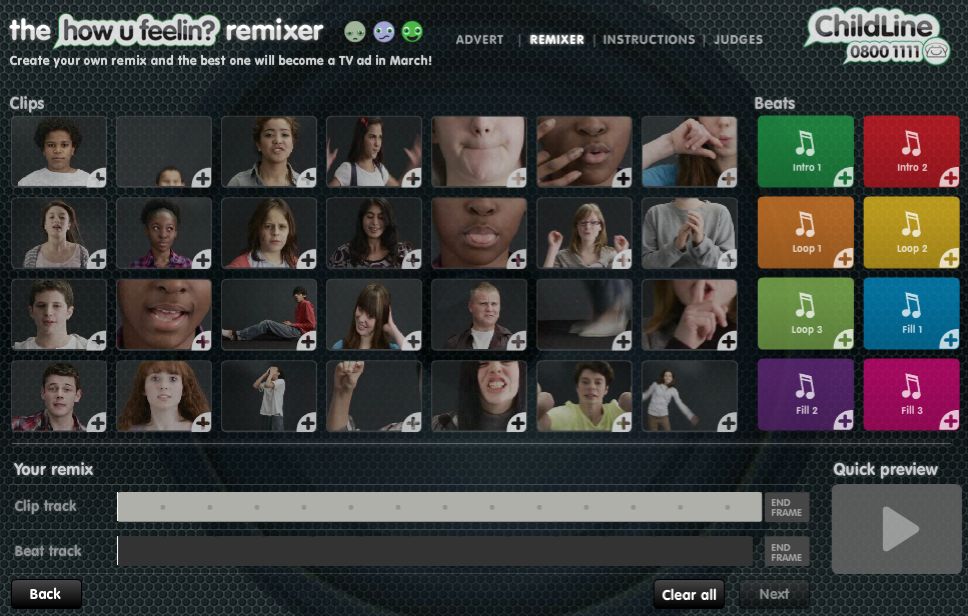
The Childline remixing tool
We have created a new campaign for the NSPCC aimed at making Childline a part of the fabric of children's lives. The idea is to encourage children to express their emotions and to position Childline as the place they can do this freely with immediate online support for those children needing help.
This is the film we made using a track composed by Paul Hartnoll from Orbital using sound and video of children expressing their emotions. The video elements were then projected onto the walls of an urban landscape and the film shot of that performance.
This is the 'making of' film in which Paul Hartnoll talks about the project.
We also created a remixing tool on the Childline website so that children can create their own films and enter them into a competition to be judged by Paul Hartnoll.
Brand new Visa ad
This is the new Visa commerical supporting their sponsorship of the Fifa World Cup in South Africa this summer. It was written by Xander Smith and Jonathan Santana, planned by Martin Smith and Directed by Chris Palmer through Gorgeous.
Is it me?
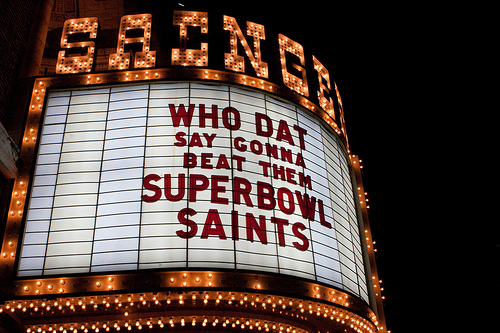
Image courtesy of Josh.Brastead
This website is usually known for its thoughtful opinion and considered approach. But I am having a Superbowl moratorium on well argued polemic. Is it me or were all the ads in the Superbowl complete arse? For christ sake if that is the best creative work that those brands and agencies can muster then heaven help American advertising. The madmen clearly have suffered worse head trauma than the players. I'd include a link to the inconsequential work that ran but you'd be better off spending the time reading a slim volume the worst poetry imaginable while repeatedly beating yourself over the head with a cricket bat.
More sex please, were British
.jpg)
Image courtesy of Dave Gorman
I have long believed that advertising is not a profession. Don’t get me wrong, I’m not embarrassed about what we do and I certainly have little sympathy with the sentiment of that terrible old joke. You know the in which someone asks that his mother is not told that he works in advertising since she thinks that he is the piano player in a brothel. However, there are a number of reasons why the idea that what we do resembles a profession rings a little hollow.
Firstly you need no specific qualifications to practice advertising, one of the primary criteria for any occupation being seen as a profession. In fact you need no qualifications whatsoever to do what we do and be very good at it. Secondly there are no professional bodies to which you have to belong, that police the profession and from which you can be expelled for malpractice. Sure there are industry associations that agencies and clients are encouraged to join but membership is not compulsory. Thirdly is the small matter of what we get paid for. Where other professional service firms sell certainty we sell only possibility.
Real professions offer certainty because their expertise in a particular area allows them to predict the outcome of their recommendations accurately. That’s true of lawyers, accountants and even management consultants when they stick to the supply side of the value equation.
That simply doesn’t happen in advertising. Expertise and knowledge are valuable but they aren’t really the reason that people use our services or the services of one agency over another. Because that expertise can’t in itself guarantee the effect that creativity will have on customers and the outcome this in turn will have on their business. You can have a feeling for the work and you can research that work but you never really know what is going to happen in the real world. This has never been more true than now because the real media with we work with is no longer television, print, outdoor or even online or search. The real medium we work with is the degree to which people are interested in what our brands are doing and want to engage with it. Try predicting that!
The traditional response to this has been one of denial. To ape the professions in order to add a veneer of certainty and responsibility to what we do. To bang on about accountability, return on investment and wear a lot of very dull grey suits to prove that we are serious.
I want to advocate a return to an industry that believes in sex. Not in our work but in the way that we behave. What advertising people used to understand is that to sell ideas that engage the right hand side of our brains and those of our customers we need to create an atmosphere that is conducive to this – sexy agencies. And in order to land recommendations based on conviction and not certainty we need to build personal relationships with clients based on mutual liking - sexy people. This is the reason that an agency of any discipline gives up its sexy location for somewhere cheaper, stints on the front of house service, or employs talented but dreary people at its peril.
In advertising our recommendations rarely sell themselves, they need help. That is why it is time to dump our pretence at being a profession and recognise that for us all, sex sells. Maybe the idea that we play the piano in a brothel is actually a rather good metaphor after all.
This post appeared originally as a column in New Media Age
Josh's Band

In the Autumn we went out and about on behalf of T-Mobile and asked people what they would do if they had free texts and internet for life - which is what you get as a T-Mobile Pay As You Go customer that regularly tops up.
And in the course of this we bumped into a guy in Brick Lane called Josh Ward who said that he would us it to start a superband. Which sounded like fun. So we helped him and the single from the band that comprises 1107 musicians in total is released on Monday 11th January.
This is the video for the single that features the musicians and the locations where the band formed to record it.
And this is how it started.
The Josh project has been very different to Dance and Singalong because it has been an extremely organic process. Rather than kicking off with an orchestrated spectacular and then farming the content for three or four months Josh has been a far greater journey into the unknown. Content has built as we have followed him around Britain culminating in the video for a single that we never knew would be the end point when we started. Along the way we have been able to cut all the requirements we have for advertising, instore and promotional material and populate the content hub on Myspace, and a YouTube channel.
Here is an example of the sort of ad we cut from the content.
And if you fancy learning the song here is the instruction video that we made so people would come to the recordings good to go.
Shock and awe
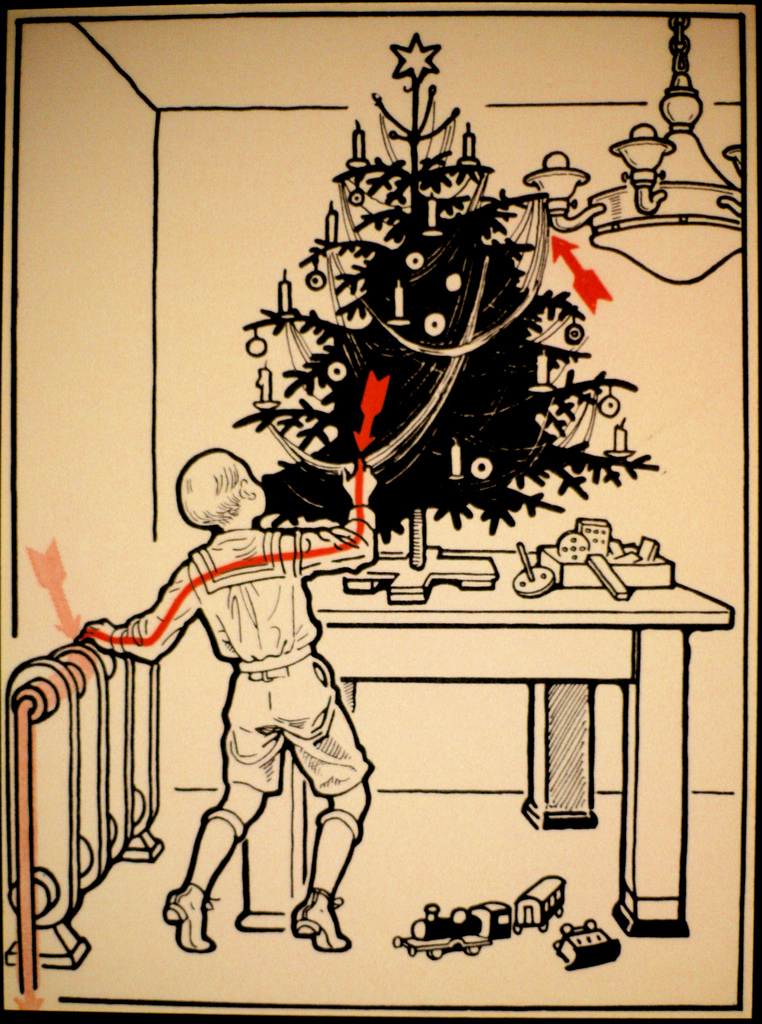
From 30 ways to shock yourself. Image courtesy of Bre Pettis
If there is one enduring fascination the mainstream media has in our business it is with shock advertising and specifically whether shock advertising actually works. Other preoccupations of the journalistic classes come and go – greenwash, teaser campaigns, neuroscience and the like – but the one they keep coming back to is shock.
This is partly because every so often an ad is so controversial that it forces itself onto the news agenda, like the recent film from Germany in which a woman gets jiggy with what we later discover is Hitler in order to suggest that sex with HIV makes you a mass murderer. It’s partly because people outside the business are naturally bemused when advertising actively sets out to create a negative reaction, given the vast majority of our output as an industry is anodyne in the extreme. But it’s mainly because we have never really given them a particularly convincing argument about why we use shock.
Sure there is the standard explanation from the terminally short of thinking that shocking advertising works because it gets talked about. To which we could now add that it probably garners a gazillion empty views on the favoured video sharing site of the moment. And all the better if the thing gets banned as this creates instant notoriety. What we might call the Frankie Goes to Hollywood theory of ad effectiveness appears to me to be entirely bankrupt and dangerously short termist. Incidentally no serious advertising agency ever tries to get an ad banned, which is the equivalent of designing a car you know to be a death trap just to garner some newspaper headlines.
So if it is not about talkability in itself why do we do it? Why does shocking advertising work.
If there is one thing we now know beyond doubt it is that emotional persuasion is rather more effective than rational persuasion, except in some very limited circumstances such as direct response advertising. As the neurologist Donald Calne puts it “the essential difference between emotion and reason is that emotion leads to action while reason leads to conclusion”. If you really want people to have a change of heart rather than simply a change of mind you are far better off generating a deep emotional reaction to the brand.
The Cadbury Gorilla communicates nothing rationally but leaves people with a feeling of joy, the Fatty Fuiags work for the British Heart Foundation is effective because it creates a deep sense of disgust while the evolution spot for Dove generated a real sense of anger at the unrealistic images of women in beauty advertising. Indeed in an era of participation marketing it is clear that emotion is the greatest form of interaction any piece of communication can create, and of course shock is one of the most powerful emotions we are able to generate.
Shock is the way you feel after the ’30 for a reason’ ad that shows a little girl coming back to life having been hit by a car traveling at 30mph rather than 40mph. And shock is the reason you will check your speed the next time you are pushing it in a built up area.
We use shock because it touches people at a fundamental level and spurs them into action not because it gets us a few cheap headlines and the censure of the conservative elements in society. And the same can be said of any work that truly engages people’s deeper emotions. So whether or not your brand can legitimately use shock, that in truth seems to work best for public service campaigns, it should certainly be working on people’s hearts and not just their heads.
This post originally appeared as a column in New Media Age
Who is to blame?

Image courtesy of Planoscorpio
Say what you like about Cannes but at its best it still serves as a barometer for where our industry and our product is heading. Most notably the Titanium shortlist, packed as it is with the coolest work from the coolest agencies and representing the new creative dividend that is on offer to brands that put participation at the heart of their work.
But the obvious question is that if this is the sort of work we all admire from the sort of agencies we all admire how come the UK is so poorly represented? Having offered the industry creative leadership for so many years is our inability to compete with the Droga 5s, Crispins, Goodbys and Nitros of this world proof that the UK is to be a foot note in the future of creative communications?
Ok so the Great Schlep emerged from a unique set of historical circumstances and perhaps its unfair to flagellate ourselves over much for failing to deliver campaigns of this nature day in day out. However, work like Queensland’s ‘Greatest Job on Earth’ and the Whopper ‘Facebook Friend Sacrifice’ came from the kind of briefs that grace our desks on a weekly basis.
So where should we lay the blame for our inability to capitalise on the new creative dividend? Who exactly, in the parlance of our times, doesn’t get it?
Well it sure ain’t the great British consumer that is getting in the way. Educated by Google, trained by Ebay and connected by Facebook our consumers are quite clearly ready to play and in substantial numbers.
And it is genuinely no longer the agency world that is dragging its collective feet. Sure the orthodox advertising agencies may have been a little slow on the uptake but once we got with the programme ur ambitions, attitudes and capability to deliver the campaigns of the future changed radically.
No, without a doubt the people struggling hardest to ‘get it’ are within the client community. It is their silo’s, their pre-testing regimes, their moribund metrics, their accepted wisdoms, their fear of risk, their politics and their obsession with short-form TV advertising that is the most significant break on the greatest future facing work coming out of the UK. Sure there are some inspirational marketers inside our greatest brand owners but invariably they sit at the helm of organisations that struggle desperately to brief and buy campaigns that have even one foot in the twenty first century.
For UK advertising to lead the world again we must now ask our client community whether it is prepared to step out of its collective comfort zone and become once again the patrons of revolutionary marketing.
This post originally appeared in a column in Campaign
Brand respsonse - a case of having your cake and eating it
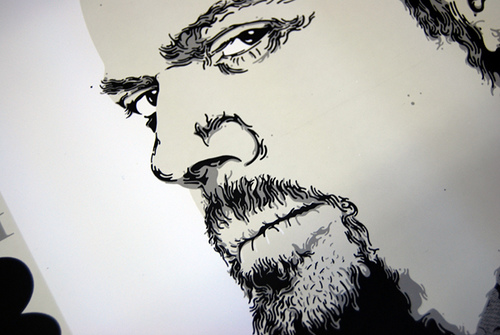
Image courtesy of Blake E. Marquis.
Eddie Izzard has a standup routine about how useless the Church of England would have been at the Spanish Inquisition, because everyone appearing before it would have been given the option of cake or death. Naturally most people end up choosing the cake option.
The choice is somewhat less clear in the world of marketing. With marketing budgets that used to dwarf our national debt now stripped to the bone by voracious bean counters, marketers face a choice of whether to spend their slim and hard won resources on brand or response.
Every fibre of their being knows that to mortgage people’s long term relationship with the brand on tactical and temporary sales driving activity alone is an act of pure folly. That’s what their training has taught them, that’s what the marketing text books tell them and that’s what their advertising agency takes every opportunity to remind them of.
And yet with real pressure on the business the imperative will naturally be to divert all their funds into lead generating activity both off and online. And with their direct and digital agencies dangling the carrot of bargain basement cost per response online no one is going to be fired for making that decision. This dilemna between response and brand is what in a less elegant past we called jam today or jam tomorrow.
Well it may well be possible to have your cake and eat it complete with lots of jam. Help is at hand in the form of an approach that goes by the imaginatively named title of brand response. Can you see what they did there? Now admittedly at first sight this idea appears to be a monumental fudge that’s almost certain to satisfy neither the objective of building an enduring relationship with consumers nor building immediate sales. And it probably is if you simply take your brand work and slap a harder sales message and call to action onto it and hope for a decent response.
However, real brand response activity approaches the problem strategically not just executionally. If the primary objective of brand advertising is to get people to ‘like the brand’ and the primary objective of direct response advertising is to get people to ‘buy from the brand’ then the objective of brand response advertising should be to get people to ‘like to buy from the brand’. And that means not just dumping value claims and offers into the market in the way direct response does but also delivering a compelling context for that claim. The context that ensures consumers understand the reason the brand is offering that deal. And right now that’s a fundamental reconfiguring of value in the lives of consumers, what we might call a new-value mindset.
Sainsbury’s gets this and right now excels at imaginative brand response marketing. Under the ‘like me’ brand idea of try something new today, initiatives like ‘love your leftovers’ and ‘feed your family for a fiver’ have people queuing up to buy from the brand and loving every moment. Small wonder that Sainsbury’s are taking the predominantly response driven Tesco to the cleaners.
Which leaves us wondering what a new world pf brand response means for digital. Online brand activity seems far more segregated into ‘like the brand’ and ‘buy from the brand’ than offline, into apps and experiences on the one hand and cheap and cheerful direct response advertising on the other. Fine if these are just tools to compliment other marketing activity, but not much of a future as a stand-alone industry. Perhaps its time for the digital marketing community itself to make a choice between cake and death.
This post appeared originally as a column in New Media Age
How come Sainsbury's is doing so well and Tesco isn't?
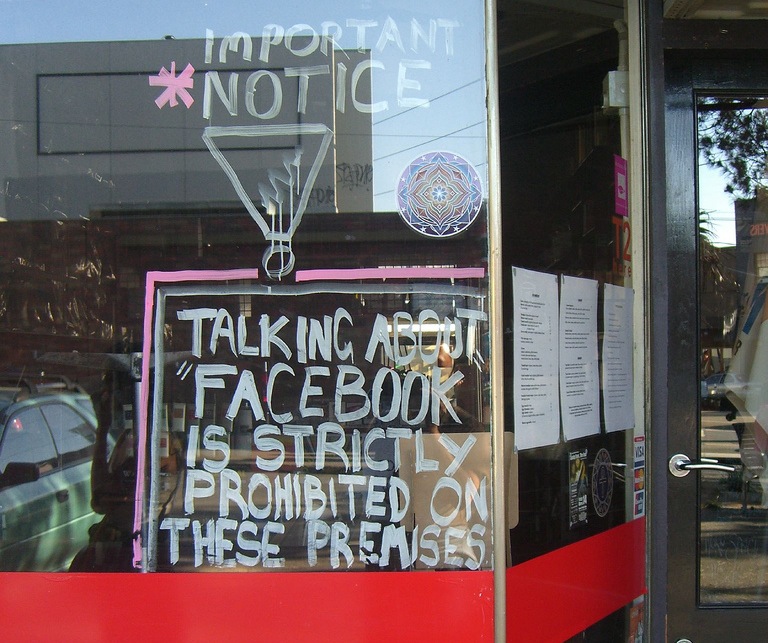
Image courtesy of avlxyz.
I love Facebook. But its not often I stumble across a real revelation there. Not so a couple of weeks ago when a feed from Paul Mcenany's excellent blog heehawmarketing popped up between the updates on the previous evenings inebriations and indiscretions.
If I have got this right Paul was suggesting that social media and advertising work quite well together in the service of a brand. Social media encourages people to like your brand and advertising encourages people to buy from your brand. So the combined effect is that people like to buy from your brand. While is quite a nice combined effect.
I love this model and think that it is applicable all over the place.
Here it is in chart form.
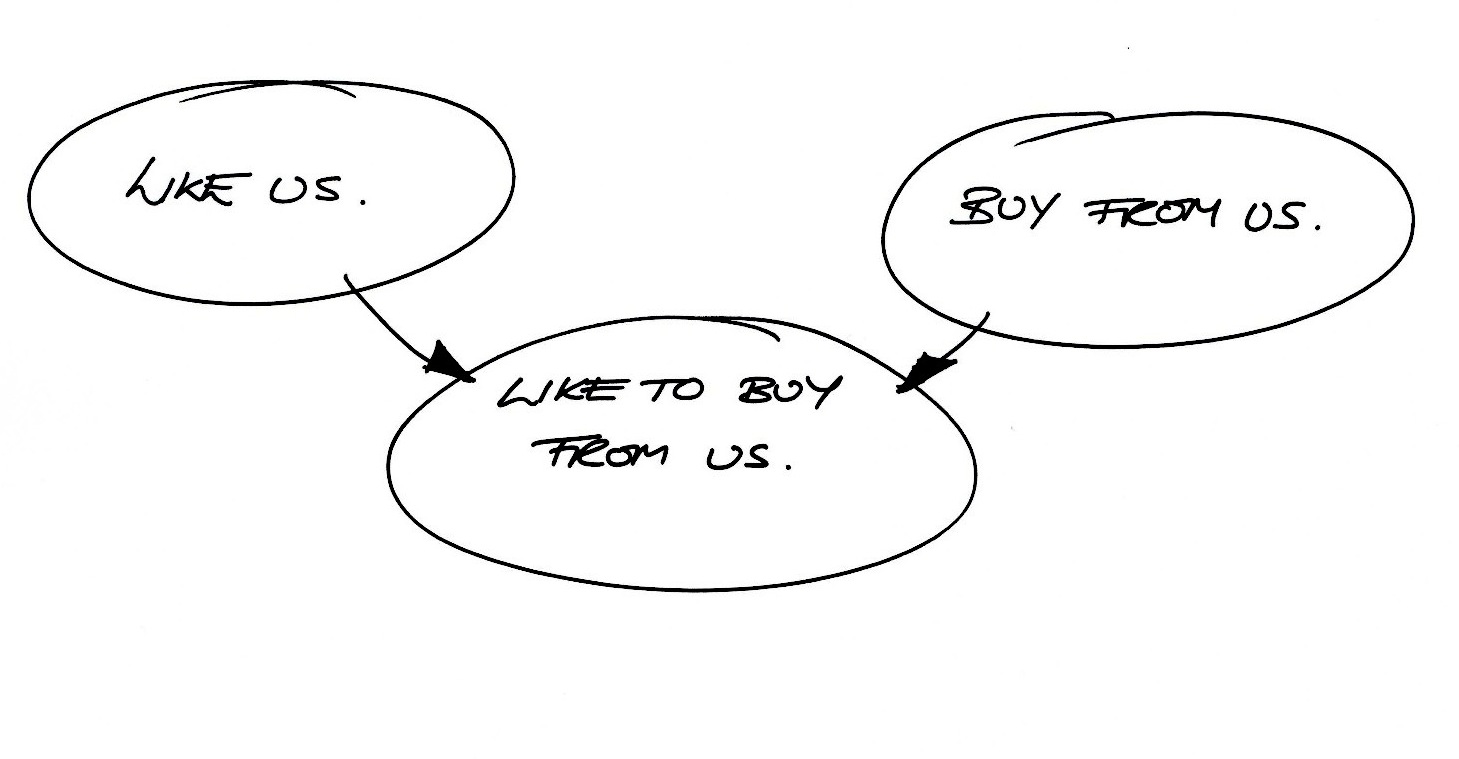
I have been working with this quite a bit recently. It works particularly well on something we call the New Value Mindset at S&S. This is the idea that the new sense of value that consumers have created since the beginning of the recession requires brands to be of value not just good value for money. If that is the case value claims in isolation (buy from us) are as problematic as communications that ignore value (like us). Better to deliver value claims in the context of the value you seek to be to customers.
Here is a brilliant example from Hyundai in the US.
It also works nicely to describe the difference between brand advertising (like us), direct response advertising (buy from us) and brand response advertising (like to buy from us). I have a longer post on just this subject that I am putting up in the next couple of days.
And finally, returning to the title of this post, it helps show why Sainsbury's is kicking seven types of shit out of Tesco at the moment. For those beyond the shores of Albion they are two UK supermarkets locked in mortal combat since the end of the pliocene.
Going into the recession the smart money would have been on Tesco winning since they had established a reputation for low prices and massive buying efficiences (£1 in every £8 spent in Britain is spent at Tesco). Tesco owned the 'buy from us' space and their first initiative was to position themselves as Britain's biggest discounter.
On the other hand Sainsbury's was the diletante of the supermarket category a brand that its customers loved but with no strong reputation for value, indeed quite the opposite. With lovely ads full of lovely food staring lovely celebrity chefs their communications were squarely in the 'like us' category.
Then a funny thing happened. While Tesco approached the recession with its neolithic discounting positioning - which upset its customers no end. Sainsbury's started showing that it was jsut as creative and resourceful as its customers with campaigns like 'love your leftovers' and 'feed your family for a fiver' all under and feeding the brand idea 'try something new today'. In a sense Sainsbury's has defined 'like to buy from us' best of all the UK supermarkets. Perhaps that's why Sainsbury's sales are up 7.8% since the beginning of the year while Tesco's are only up 4.3%.
Anyway its just a funny little chart. Maybe it will work for you. And once again thanks Paul for the inspiration.
Nostalgia Blackmail
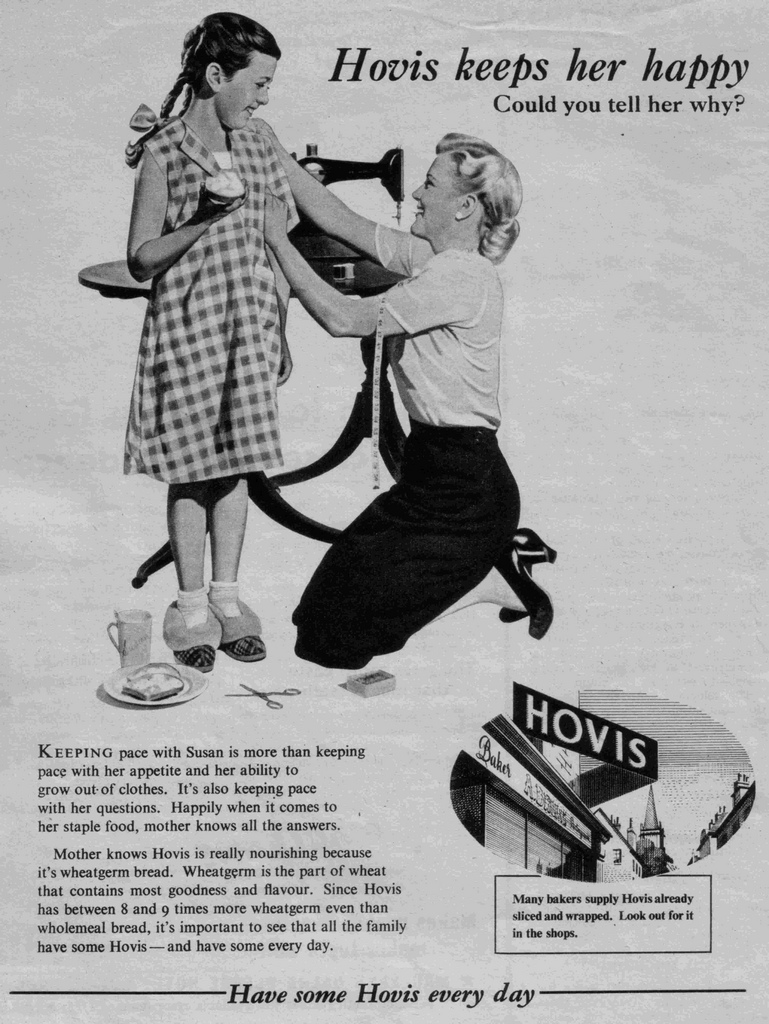
Image courtesy of Old School Paul
One of the defining features of this recession is the number of brands immersing themselves in utterly self-indulgent nostalgia trips in a desperate attempt to curry favour with increasingly cynical consumers.
Hovis were first out of the traps last year with their British history lesson on speed that picked up where the flat cap wearing delivery boy and his bike left off in the early 1970s. Although by then Mars had already heralded the dawn in a new age of nostalgia by returning to their iconic ‘work, rest and play’ endline.
But recently the trickle of nostagia has assumed flood-like proportions. And there is clearly no better way to dish up a bit of ‘as good today as it’s always been’ than by celebrating a brand’s birthday, particularly if the number you can come up with is north of a century. All of which explains why flamboyant tours of brand heritage are flavour of the month in ad-land.
In a brief cease-fire in the hotly contested dine-in-for-a-fiver battle, M&S and Sainsbury’s are currently slugging it out to prove exactly how incredibly old they are. Although whether producing almost identical ads, right down to both supermarkets claiming to have introduced the avocado to British palates, was a wise idea is debatable. Especially as they both try to out Hovis Hovis in the sepia tinted film and street urchin department.
While over in the detergent category Persil is busy telling us they have reached the relatively modest age of 100 by re-running the ‘best’ of their historical ads. I put best in inverted commas because if this were a brand like Guinness a retrospective of their work would be a thing of pure and absolute joy. Not so Persil which has largely forgotten to make any memorable work while it has been doing such a good job washing our whites whiter.
Planners will tell you that these brands are rather cleverly exploiting the hoary old insight that in difficult times like war, natural disaster or in this case a slight downturn in the property market, consumers yearn for the comfort and certainty of the past and of brands that have been knocking around a bit. Hence the impetus to roll together a brand’s birthday with a sentimental trip down memory lane in advertising confections that can only be described at nostalgia blackmail.
Clearly a sense of a brand’s authenticity is important, especially when consumers can now spot a mile off a brand that has been conjured out of thin air in a NPD brainstorm. However, I struggle with the idea that recalling a time when our child mortality rate dwarfed that of modern day Sierra Leone and contracting Tuberculosis was our national sport holds much value for brands seeking relevance to people’s lives today.
Indeed brand heritage is totally over rated and really rather dangerous. Take a brand like Hoover that basked in its history as the original vacuum cleaner for decades until a better product in the form of the Dyson came along and ate its lunch. Or for that matter the fact that according to WPP the world’s most valuable brand, Google, has absolutely no heritage whatsoever being only 11 years old. Indeed the most powerful online brands, the ones that we are really taking to our hearts and that have assumed an almost effortless a role in our lives owe their success to the way they allow us to do things that we have never been able to do before and not because the are as good today as they have always been.
That tricky second album

Life's for sharing. Image courtesy of maize
So here it is 48 hours after we wrapped the shoot, the second T-Mobile Campaign 'Sing-a-long'.
It took us a month, 13,500 people, 200 extras, 2,000 microphones, 8 songs, Vernon Kay and Pink to pull off. But we are rather happy with the results as so it appeared were the people in Trafalgar Square last thursday.
See what you think.
Here is the full length rendition of hey jude.
Here is the audience edit
Here is the life's for sharing youtube channel with this and much more on it.
The best way to see the rest of the event is from people's own films on you tube by searching for t-mobile Trafalgar Square.
Enjoy.
Context is king
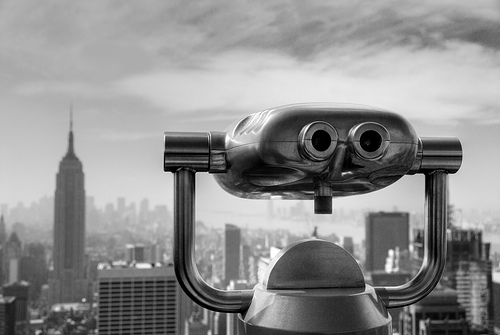
Out of context is viewing online commercially valuable? Image courtesy of papa'rocket.
As we career head long into the economic car crash that is destroying jobs, crushing consumer expenditure and ripping the confidence and profitability out of both client and agency organisations, one performance metric has emerged above all others to guide us through these tricky times.
It’s not a measure of efficiency like cost per response, it’s not a measure of likelihood to purchase like brand consideration and its certainly nowhere close to a measure of return on investment. It is the number of people viewing a commercial online.
Right now the advertising industry has become obsessed with this one measure of performance above all others, we even have our own chart at viralvideo.com to add a little competitive frisson between agencies.
Now, it is easy to see why ad people love online views, it is a pure measure of creative prowess. Of course a brilliant seeding strategy can turbo charge online distribution but by and large, unlike traditional media, you can’t buy the audience. Your content has either got what it takes or it hasn’t and that places real value on the thing that agencies value the most and get paid to deliver – creativity.
Of course we have to be realistic about the reach that online viewing can contribute. You have to have something pretty spectacular on your hands like the T-Mobile Dance ad or Cadbury Eyebrows spot to generate the big numbers that make online a serious contender as a distrbution medium. However, the counter argument is the value of an audience that elects to view a commercial message rather than one that is served it regardless of whether they are remotely interested or paying any attention whatsoever.
As a legendary house ad from the ad agency HHCL read while showing a couple going at it hammer and tongs on the sofa oblivious to the TV playing in the foreground, ‘research says these people are watching your ad, who is really getting screwed?’ It seems self evidently true that one voluntary and attentive viewing of a commercial is worth considerably more to the advertiser than the many potential views that a commercial break may or may not have delivered.
Now, not that I want to rain on the online viewing parade but I do want to encourage a moment of caution before we all drink the YouTube Koolaid. Caution inspired by the idea that it’s not only content that is king, context has a pretty good claim to the throne too.
When people watch an ad on the television it is delivered to them in a commercial break. A break in the content that is overtly signposted as an opportunity for people to sell their goods and services and understood as such. The audience has been conditioned to decode the content they then see as ads and that their job is to figure out what is for sale and who is selling it. No matter how eyewateringly creative or side splittingly enjoyable the work, this is clearly understood as a commercial transaction between advertiser and audience. And though it’s hard to quantify exactly, it is clear that this context adds considerably to the success of the content.
And that’s what concerns me about the hoopla around online viewing. Is an ad an ad when it’s viewed out of the context of an ad break? Or does it simply become a piece of sponsored content, engaging and enjoyable but neutered of its commercial power and therefore of dubious valuable to the Client’s business and a rather inappropriate a metric to be fixated on at this particularly mercenary time in the economic cycle.
Hat tip to Paul Colman who got me onto this and is undertaking some proper research on the subject as we speak.
Love it before it leaves you

Keighley Station on the Keighley And Worth Valley Railway, location for our latest Head and Shoulders ad. Image courtesy of Matt Ots
I know how much you all love it when I post new Saatchi & Saatchi work. But I kinda think that an advertising blog with no advertising is a bit silly and moreover if I am going to bang on about stuff online I should put up the work we are doing to be transparent and accountable.
So here is the latest work for Head & Shoulders.
More work thats not bad
That'll be the latest outing for the 'Life Flows Better' campaign for Visa. It features the performance of Bill Shannon and was directed by Joey Garfield both of whom we came across last year while putting together the Saatchi & Saatchi New Directors showcase.
Here is the 80 second ad.
The track is Come on Train by Don Thomas which we had remixed by the Go Team and is now available on i-tunes. You can listen to the entire remixed track here.
This is the Promo for RJd2 that we featured on the new director's showcase.
For more information on the artist here is Bill Shannon's site.
And this is the Lifeflowsbetter YouTube channelhere.
What's in a name?

It is not clear why, of all the things that might concern a business as we enter a year of economic and consumer uncertainty, changing your brand name would be number one on the list of priorities.
It is even less clear why you would want to spend a considerable amount of your cash telling the entire British nation about it, the vast majority of whom have less concern about your little endeavour than they have about the political situation in Azerbaijan. And still less why you would attempt to dress this spot of administrative deckchair rearranging as a benefit to any one except those hoping to win some cost savings from the corporate signage budget.
Nevertheless, none of this appears to have been of concern to the good people at the insurance company formerly known as Norwich Union. Their name change campaign is now coming to an end, not only having informed us of their act of brand vandalism but also having insisted that Norwich Union was a lacklustre name and that now they are called Aviva they will be far more successful. Just like the handful of celebrities desperate enough to mouth such arrant nonsense as “sometimes a name change isn’t just a name change, sometimes its a chance to show the world what you have always wanted to be”.
And so with the stroke of their pens Aviva has consigned a 310 year old brand to the corporate scrapheap. All the history, all the associations, all the good will, all the familiarity and three centuries of marketing investment. Gone.
Perhaps no one cares, though I might if I was a shareholder. You see these brand things we work with are desperately fragile, you mess with them at your peril. They can be the source of enormous commercial advantage or simply a silly name and a pretty logo. Was it really such a smart idea to change the name of Virgin Megastores to Zaavi? A deeply challenged business had the last vestige of brand advantage clinically and cynically snatched away, hastening the chilly embrace of the administrator.
Now I’m not suggesting that brand familiarity and affection alone will cut the mustard in these interesting times. A brand has to have a clear and clearly articulated role in peoples lives, you don’t need to look further than Woolworth’s sordid ending to understand that. In fact, the businesses that are disappearing first and fastest tend to brands that lack a point and offer goods and services that are available more conveniently and cheaply elsewhere.
And I’m not suggesting that a new entrant to the brandscape, whether through birth or a change of name, can’t be very successful very quickly either. The last decade has witnesses the arrival of gargantuan brands both on and offline, from Google (that WPP rates as the world’s most valuable) to Dyson.
But the issue is to create a real role in people’s lives and to do so with a fresh brand requires one fundamental and terribly unfashionable ingredient, clear product superiority. And this is what digital businesses have always instinctively understood and understood far better than the offline brands. Whether it’s an instantaneous way to purchase music, an encyclopedic inventory of books or an easy way to share video product performance has always been paramount for online brands or brands seeking to engage people online.
Advertising of any kind will need to learn that its role going forward will be to help create and dramatise these differences and not simply attempt to build brands through ludicrously expensive awareness campaigns, particularly those that are name changing not game changing.
So good luck to Aviva. Perhaps the loss of familiarity and affection won’t matter, perhaps the new name will be an overnight success and perhaps they have concocted a radically new approach to the business of insurance that will propel them into the brand stratosphere. Perhaps. My money is on this being a monumental act of corporate vanity and that it will take years and millions and millions of pounds for the business to recover.
Bursting with pride
The full T-mobile ad shot on Thursday morning and aired last night.Allowing myself a small off topic moment of bigging up Saatchis. I think the phrase 'we're back' may be in order. More at the T-Mobile YouTube channel.
The power of emotion
 Image courtesy of awwwww.cc
Image courtesy of awwwww.cc
A couple of weeks ago I gave a little talk on the power of emotion in advertising. I thought I'd share a little of it because there are some nice examples.
I have also included a handy little PDF on emotions from Robert Plutchick that adds more depth than in the presentation I gave. In particular it shows our evolutionary response to those emotional stimuli. For example in the case of being presented with an unpalatable object (say a cigarette full of gunk and not tobacco) we appraise that as poison which stimulates digust. Our reaction to disgust is to vomit and eject the poison. And that model helps us to understand why disgust is sucha powerful emotion in advertising if you want people to change behaviour (like give up smoking) and not just change their attitudes.
I kicked off with a quote that we love at Saatchi & Saatchi because it feeds directly into the philosophy behind Lovemarks and helps people understand that emotional potency is a better route to effectiveness than pure rational communication.
"The basic difference between emotion and reason is that emotion leads to action while reason leads to conclusions". Its by a chap called Donald Calne who plies his trade as a brain scientist.
I then backed this up with some data from the excellent IPA book by Peter Field and Les Binnet on Marketing in the Era of Accountability. There is a whole chunk of stuff that uses the IPA Effectiveness dataMINE to show that on virtually any conceivable metric emotional involvement beats rational persuasion in getting result delivered. Seriously worth getting a copy from the IPA.
Then I wanted to talk about fundamental human emotions rather than whitter on about the sort of emotions we write into the usually pointless and bland tone section of our creative briefs. I wanted to show that communications can create an intensely emotional response in the viewer and that meant understanding real emotions not marketing emotions - remembering of course that emotion is the highest form of interaction. As luck would have it in a rather serendipitous moment I stumbled across Paul Ekman who apparently isolated five fundamental emotions in the early seventies. He did this studying tribespeople in Papua New Guinea because they were free from Western cultural conditioning.
So here are the five commericals each representing one of the five emotions. Clearly I reckon you feel the emotion very clearly but that may be because I'm a sensitive old soul. See what you think.
Joy
Anger
Sadness
Disgust
Excitement
Remember this is not about what you think watching these films but what it makes you feel. You don't have to be excited by the idea of football to feel you pulse racing.
I kind of wrapped it up though by making a plea for more than executional emotion (utterly powerful though that is). Rather that at best brand should be emotional to the very core.
And that it pure Lovemarks territory. In other stopping using communications to get people interested in the stuff brands care about and instead re-engineering brands to care about the things we all care about.
Which returns me to my traditional gig about brands having a position and not a positioning.
You may thinks all bullshit - but it works for me.
Here's the PDF of Plutchick's work.
It looks like this which is quite funky.
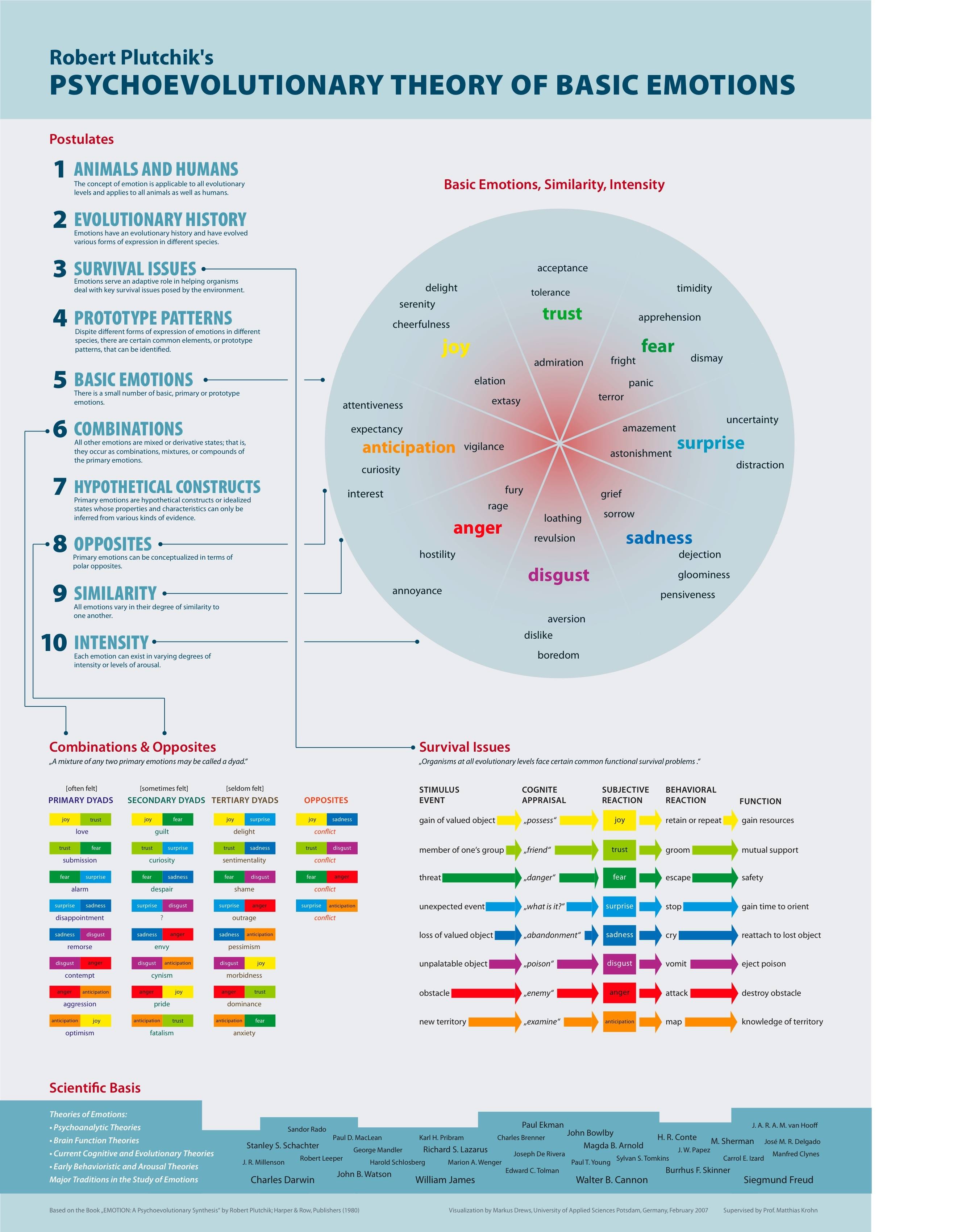
New work from new home

Charlotte Street, spiritual home of London's ad land. Image courtesy of Chaz Folkes
Its always nice to see some ads occasionally on a blog about advertising. So I have put together some more of the recent work from Saatchis in London.
Council of Europe - Anti Smacking
Planner: Jane Cantelow
Creative team: Rick Dodds/ Steve Howell
T-Mobile
Planner: Gareth Ellis
Creative teams: Dennis Willison / Suzanne Hails / Howard Green / Pablo Videla/ Paul Silburn
Director: Taktor through Partizan
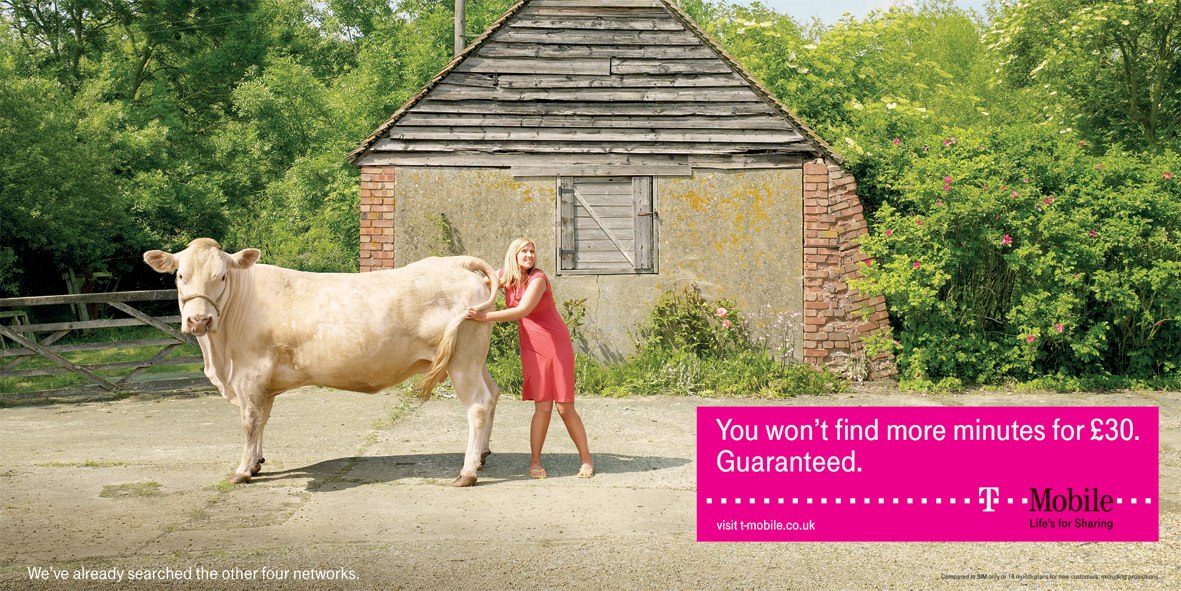
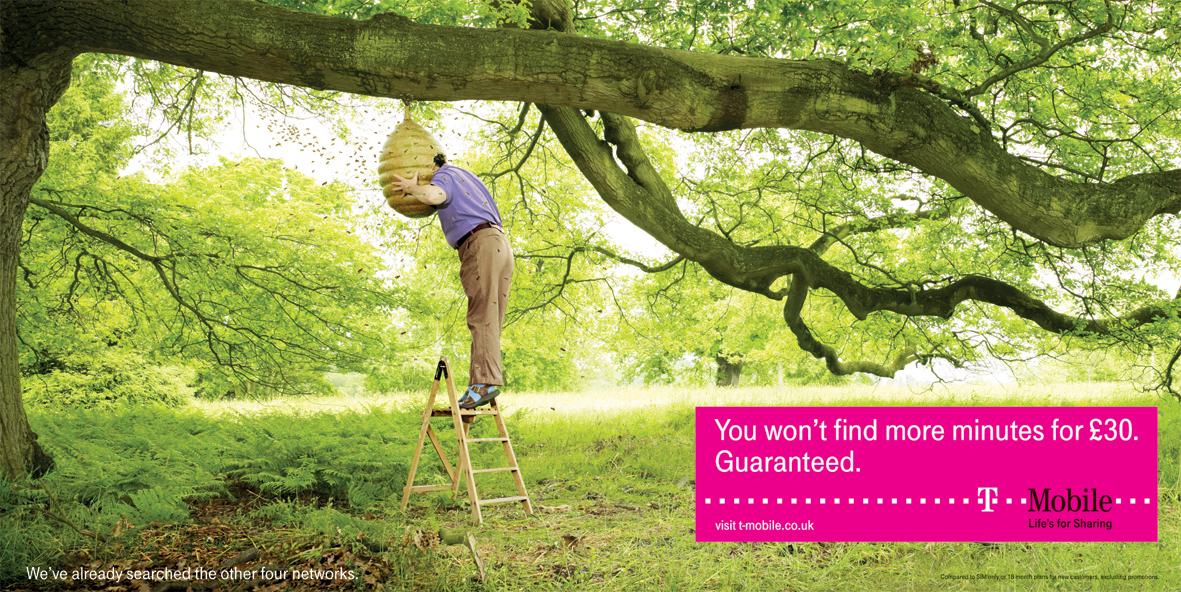
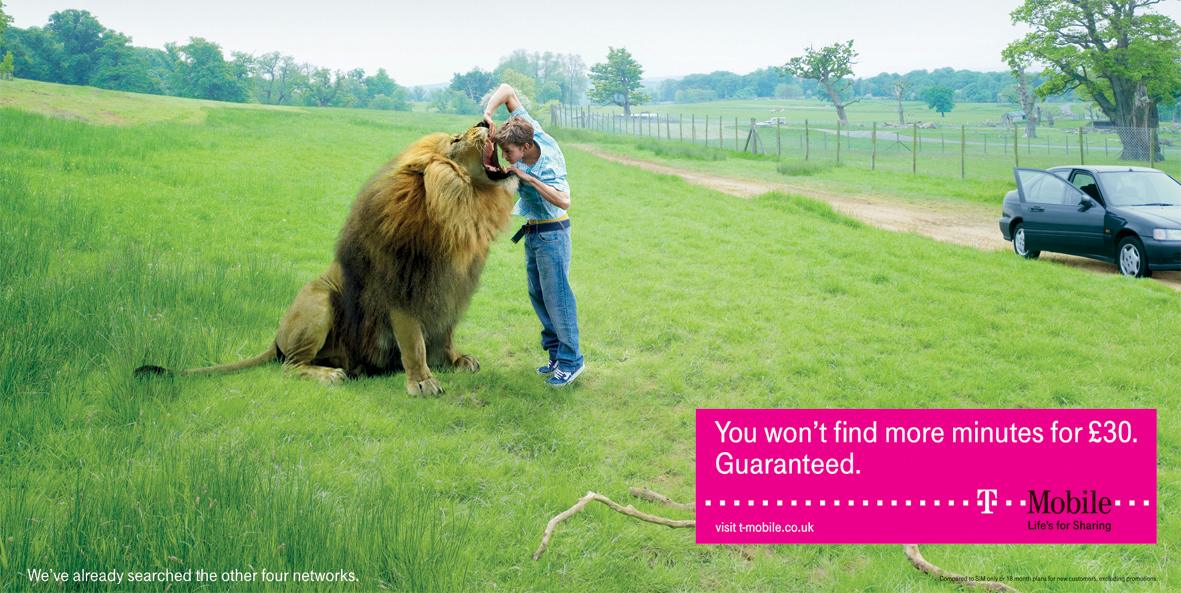
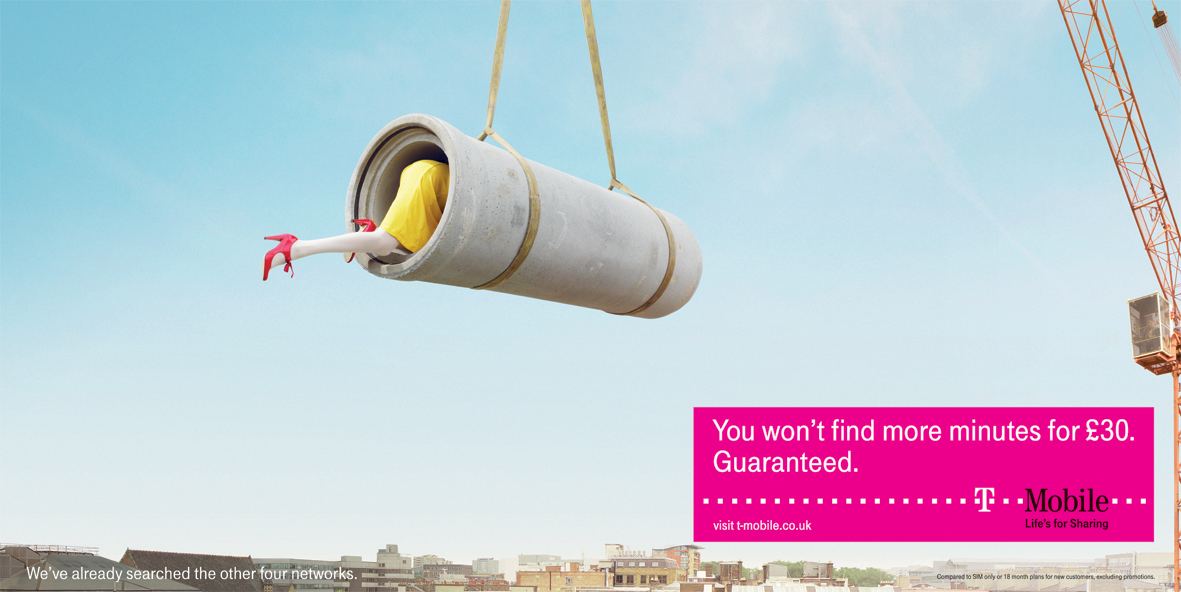
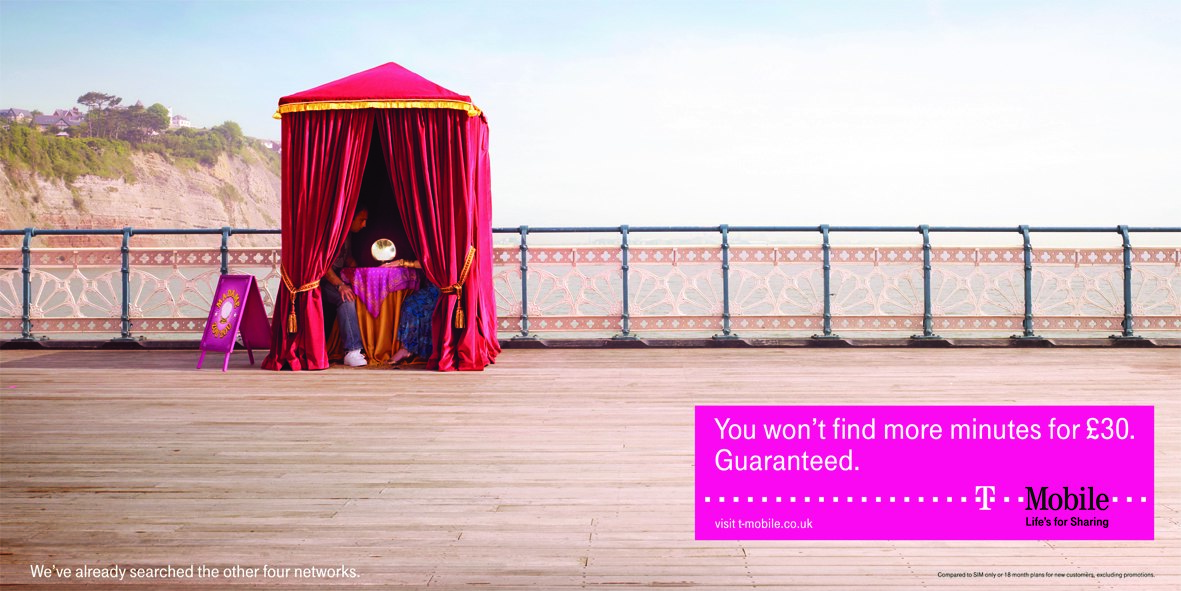
The work fights back
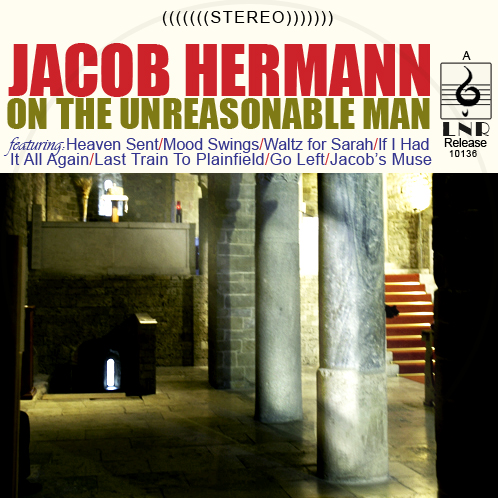
It is time to get unreasonable in support of truly great work. Image courtesy of Antar.Ellis
Returning to the world of advertising after a short break, I am reminded of the fundamental truth of our business. To paraphrase the advice given to Bill Clinton during the 1992 Presidential Campaign, it’s the work, stupid.
Great work delivers happy clients, new business and perky bottom lines. By and large if you focus obsessively on the quality of your creative output then everything else will fall into place. Of course by great work I mean proper nosebleed-altitude creativity not the usual lifeless fare that stinks of collaboration and compromise.
However, this mantra hasn’t been heard in London for a while outside one or two exceptional shops. For the best part of a decade creative quality has played second fiddle to a pleasant client experience and the immediate financial success of the agency.
The problem can be traced back to the point at which internet bubble burst at the turn of the decade and in the advertising recession that followed. The dot-com crash may have delivered a kick in the teeth to the fledgling digital industry but it had a far more lasting effect on the advertising business. It is no coincidence that dodgy digital entrepreneurs loaded with venture capital sought out precisely those agencies with the best creative reputations. In the short term it left our best shops with huge financial write-offs as bankrupt clients proved unable to pay their bills. In the longer term a far more cautious market destroyed the enthusiasm of clients to buy truly excellent creative work and the ambition of agencies to deliver it. Not only did established agencies go soft on the work, a rash of recession-fit start ups came to market built exclusively on client service platforms, and they cleaned up.
These were bad days for the strategically and creatively daring and, with one or two exceptions like BBH and Mother, these agencies had a tough time of it, many merging, shrinking or closing their doors. In particular creatively driven agencies found it far harder to win business than their more compliant and compromising rivals.
But here is the irony. Just as the economy looks rather less than robust the market might actually be swinging back in favour of braver work, with those agencies that kept the creative flame burning during the difficult times enjoying business success to match their impressive reels. And as the work fights back the benefit for the UK communications industry is that London has started to walk a little taller on the world’s creative stage. Cadbury’s Gorilla recently won the highest accolade possible at D&AD, the globe’s most prestigious creative awards and UK fingers are crossed for a robust performance at Cannes this week.
Moreover, the client community maybe starting to remember that better work delivers better results. Creativity has always been an important element in powerful communications but never before has the quality of the work had such a direct effect on the effectiveness of the budget, and the success of the brand. Because never before has the primary determinant of consumer reach been consumer engagement rather than simply ratings. Only a few weeks into the launch of the Gorilla ad, the number of people that had seen the film was almost double the number that Cadbury’s had actually paid to see it.
Agencies must capitalise on these changes in the communications market and in the client community’s apparent appetite for nosebleed-altitude creativity. And to do this they must be more unreasonable in their relationships with those clients, determined to deliver the best thinking and best work whatever it takes.
This post originally appeared as a column in New Media Age.
Enforced advertising stinks

Image courtesy of M&G
Time for a quick rant.
I have long felt that the one of the guiding principles for advertising is that it should do some good in consumer’s lives even if they chose to ignore or avoid it.
I may have no interest in the press ad at the bottom of my newspaper but it is helpfully subsidising the cost of my read, partially in most cases and completely with free sheets. I read once that the UK’s Guardian newspaper would cost £6 rather than 70p without advertising. So you see, the ad has done me some good and every other Guardian reading planner in North London.
Clearly this is also the case with advertiser funded free to air TV, much outdoor (where councils benefit from the income), advertising on public transport and obviously online where advertising often facilitates the delivery of entirely free product.
And this principle is one of the reasons I hate much ambient marketing that Russell describes as Urban Spam. Because the only beneficiaries of the activity are the brand owners and the people that chose to engage.
So why the hell do we have to put up with pre-roll advertising on DVDs? Or rather why to we have to put up with pre-roll advertising on DVDs that you cannot skip? Advertising that you are forced to watch despite paying through the nose for the content.
Theoretically this is no worse than your average interruptive TV ad but somehow the viewing experience of DVD movies means that enforced advertising of this nature is uniquely irritating. You’ve paid your money, you have sat down to be entertained by a movie you have chosen specifically to watch and you are made to endure an ad or two without the option to skip.
What scumbag at the distribution company faced with the option of allowing people to skip the ads and previews (as say Disney do because they understand the likelihood of pre-schoolers putting up with this nonsense) decides to enforce viewing to no benefit of the viewer? I have a very strong desire to beat them to death with sticks.
I recently experienced enforced advertising on a copy of Charlie Wilson’s War for a UN anti-aids message featuring minute after arse-grinding minute of Gwyneth Paltrow reading a poem. And don’t give me any of that simpering ‘its a good cause’ bollocks, it is but the ends never justify the means. The same weekend I had to put up with enforced Blue Ray advertising on The Assasination of Jesse James by the Coward Robert Ford, a more considerable pain since I watched it over two nights and so had to have the message rammed down my neck twice.
Advertising may interrupt my life if it is doing some good in that life or facilitating my enjoyment of the advertising environment (whether TV channel or clean street). Advertising viewing must never be enforced, especially when the only beneficiary is the advertiser.
So movie distributers please cut the crap and let us skip all or any of the content on your DVD, especially when we have already paid you so handsomely for the movie in the first place.
Otherwise I will expect to buy my DVDs for £1 from now on.
Spoiled by choice

The Creation of Adam by Michelangelo, part of his scheme for the ceiling of the Sistine Chapel completed in 1512. I may be wrong about this but as far as I am aware he wasn't asked to present three different options for the ceiling to go into research.
Once upon a time in a land far away come the appointed hour of the creative presentation, agencies recommended one idea to their clients.
It would represent the best solution that they could possibly develop to answer the business problem they had been given. And because, of all the ideas that they had generated and rejected, this was the best one they could find, they then presented with absolute conviction, backing up the point of view with instinct, research and sheer force of personality.
This approach seemed to work fine until agencies got lazy. They still presented one solution but it was anyone’s guess whether this was the finest flowering of the agency’s creative product or something conjured out of thin air in a desperate attempt to meet the looming deadline of the client presentation.
So one or two newish agencies hatched a plan. They would present multiple routes earlier on in the process at what were termed 'tissue meetings', nothing could be bought or sold in these meetings but they allowed an early airing for fresh ideas. Chiat Day invented them in the US and HHCL brought them over to the UK when they launched in 1987. Even in the later stages of creative development they would keep multiple routes on the table and allow research to help decide which one to go with.
And this process worked an absolute treat. In the hands of very good agencies it allowed braver and more difficult work to be aired early on and let clients get used to the more challenging stuff on the table, enhancing the likelihood it would be made. Not only did it lead to more interesting advertising but it was an absolute boon to new business because clients found this approach refreshing, not least the peculiar idea of multiple routes in pitches. In addition good clients gained confidence in working with rawer ideas and keeping the difficult stuff on the table at least until it could be researched.
But then something rather dispiriting happened. The rest of adland cottoned on, or were forced to by clients who were getting better work from elsewhere in their roster using the new process. Tissue meetings and multiple routes became the industry standard. Clients wanted to know why there weren’t three routes on the table, regardless of their merit, because they were paying good fees and they wanted to get their money’s worth. Often they would demand that new creative ideas were developed simply to pad out research - not the most auspicious begining to any creative process.
Never mind the quality, feel the number of make-weight creative ideas, became the new industry mantra.
Far from the tissue meeting and multiple route process improving the standard of work, it actively conspired to degrade it. Agencies, reassured that they had something in the bag, presented work that they didn’t wholeheartedly believe in and clients became addicted to the seemingly collaborative approach which appeared to yield genius so very rarely. In a way, because there was no longer a massive punctuation mark in creative development - the creative presentation - both parties slipped into a process that forced neither one of them to step back at any time and ask “but is what we have actually good, I mean really good”. Welcome to the era of ‘some advertising’.
Ask most people in agencies about this development and they simply shrug their shoulders in resignation - thats what the market demands these days so we have to do it. In the US the need for multiple routes is even written into agency contracts on occasion.
But is anyone really being served well by this approach.
Its not that I am against sharing raw ideas or against researching multiple routes. On Tango we would often have ten to fifteen ideas for Tissue and research three all of which the agency were desperate to make. But I worry that it has eroded the responsibility of the agency to recommend the right course of action to a client in solving their business problem.
I can’t help feeling that the time is right to reverse at least some of the damage and return to the idea of a firm agency recommendation. It has already started in pitch presentations where variety is provided by the number of competing agencies and so multiple routes from one agency is unnecessary and increasingly unnerving for clients wanting to understand each agency’s clear opinion.
But isn’t time that we re-embraced the idea of ‘recommendation’ in our day to day relationships and give our clients the very best work we possibly can and nothing but nothing else. Isn’t it time to put and end for all time to the hideous spectre of ‘the route we want to sell’, ‘the route we don't mind selling’ and ‘the safe route the client will like’?
After all recommendation is surely why clients go to agencies in the first place? To ask the people that create selling ideas every hour of every day and have done so for a couple of decades or so ‘what would you do to solve this problem?’
Because, regardless of what is asked for, it remains the case that all we, our clients and our customers really want out of an agency is one brilliant idea.
New work from new home

Charlotte Street, spiritual home of London's ad land. Image courtesy of Chas Folkes
Thought I'd put up two new bits of work from Saatchis in London. Visa is hot out of the edit suite, you may have clocked Carlsberg already.
Coherence is more important than consistency
One of the things that I always bang on about without really thinking about it in depth is the idea that Clients and agencies need to place less emphasis on consistency and more on coherence. So I thought I’d worry this one out a bit.
Consistency was the marketing mantra of the ‘90s. Both Clients and their brand advisers would regularly look at the entire creative output from the brand and demand that it be more consistent.
By which they usually meant that it should look the same either in its entirety or certainly within individual campaigns. Direct usually got it in the neck for not looking like it came from the same company as the above the line work, and this heralded the growth in brand literate DM agencies in the early part of the decade.
The philosophy was built around the idea that budgets could be better optimised if all the creative output looked like, in the words of that ghastly cliché so popular at the time, ‘it sang from the same hymn sheet’.
This approach reached its zenith with identity rich communications from brands like O2 in the UK, which delivered religiously consistent work at all customer touch points.
It also manifested itself in geographical consistency, where the same work for a brand was run across all territories. Coke was big into this in the early nineties before embracing a more open approach to creativity. This may well have started out as a way from exercising control over local markets and delivering some production economies but made greater sense as the internationalisation of both consumers and media started to match that of the brands.
Consistency was everything.
The trouble was an emphasis on executional consistency rarely derived from a clear and coherent strategy for the brand. Either consistency was driven out of an advertising campaign devised for specific media or out of an identity that had little to say beyond superficial aesthetic appeal. Surely if it all looks the same and uses the same endline it means the same.
Maybe we are now witnessing a counter trend. One where Clients and agencies are less bothered about executional consistency as long as the brand’s point of view is coherent across media, between campaigns and around the world. Hell the endline doesn’t even need to be the same if it still delivers the idea at the heart of the brand.
Of course this requires the brand to have a coherent point of view in the first place and rather points up those that have a nice endline but no role to play in peoples lives.
I think we can see this approach happening on Dove with the campaign for real beauty. Here we see an astonishingly coherent brand idea being delivered in all sorts of ways to the delight of the audience. The richness of different media and the subtleties of different cultures are easily accommodated because of supreme confidence in the brand idea.
The added bonus of this shift in priorities has been the improvement in inter-agency relationships and collaboration. Individual shops are far less likely to be asked to copy the work of another agency and more likely to be given the core idea and asked to do the best possible work in their medium or their market. The lead agency is still the one that devised the idea but that position is less likely to be used to stifle the role of others. Who is the lead agency on Dove? Well its not entirely clear form the outside and just for now Ogilvy in Toronto is making the most celebrated work.
There is a view (actually I stole this from Dr Joe Plummer and have manipulated it to suit my own ends) that coherence is the name of the game now because audiences are no longer congregated by media so that the same group of people are drawn together at the same time and place to witness the same content on the same platform. In a world of congregation everybody is seeing everything so it makes some sense to make it all look the same. But if audiences are increasingly aggregated from different groups of people witnessing different content from the brand at different times and on different platforms then executional consistency becomes both less possible and less desirable
Against that backdrop it is rather sad to see Bravia doggedly pursuing an extremely unedifying approach to their work seemingly built entirely on consistency rather than coherence. So while moving image advertising uses all the power of that medium to deliver colour like no other, none of the other media are allowed to do this. Instead they must parrot the TV work to the point where they cease to be ads for Bravia and become little more than ads for the ads. I’m sure there is a bloody good reason for this but as far as I am concerned ‘build awareness of the advertising’ is rarely a legitimate communications objective.
I think that’s what this consistency versus coherence thing is all about anyway, but as ever maybe its something you would help me build upon.
Reporting from the digital front line
I still maintain that very few people in advertising agencies really understand what clever digital agencies can do for their clients.
And I had this further drummed into me last week as one of the judges of the NMA and Marketing Week's Interactive Marketing and Advertising Awards.
So I thought I’d jot down some observations on the work from the perspective of a planner from an above the line tradition trying to understand what is going on.
Here are five bite sized observations:
1) The technological prowess on display is astonishing. Not only that, but the tenacity and resourcefulness of the agencies in delivering formerly impossible solutions is awe inspiring. To my mind this is where above the line understanding of the digital discipline is poorest.
2) Production values are getting scarily good and the case is increasingly being made for a greater share of the production pie – i.e. some proper budgets. Not because more people are experiencing the work (which of course is true) but because better production values are delivering better results.
3) The planning on display is often about an acute understanding of the interface between consumer and media (comms planning) which is extremely cool. However it is rarely about an acute understanding of the brand and it’s role in people’s lives which is less cool. Great communications have to be about the brand's promise as well as it's delivery of sponsored applications.
4) The metrics are impressive – tangible and rich. But they tend to dwell in the world of the terminally intermediate – click through, pass on rates, cost per click, dwell time and the like. One often ends up craving a sales effect or even a simple change in attitudes towards the brand.
5) While the digital elite in the UK is a relatively established group of agencies there are some frightening good small agencies breaking through on both the creative and media side. Maybe this is the category we should be looking to for a renaissance in UK creativity not the ATL start ups.
Anymore than that would be giving the game away.
Gorilla - those remixes in full
I am a big fan of the Cadbury's gorilla ad and fully expect to see some stonking sales results coming in thick and fast.
In the final instance I just think somethimes you need a bit of this - good old fashioned salience delivered by a fame seeking commercial.
For all the analysis, particularly online, I had overlooked they way it was perfectly built to be remixed - or simply have a new track laid over it.
So here are a few of the best remixes I could find on you tube. My personal favourite is of course Total Eclispe of the Heart.
Bonnie Tyler
Nirvana
Guns 'n' Roses
Deep Purple
Bon Jovi
Let the BBC's troubles be a lesson to us all
The BBC is in trouble.
It stands accused of endemic audience deception - most specifically over the fabrication of phone and interactive competitions where the participants have no chance of winning and the declared winners are either fictitious or members of the production staff.
Oh and there was some argy bargy about the Royal Family as well but any opportunity to give the parasites a kicking is fine by me.
Of course the BBC is in the firing line because we expect rather more of them than the commerical broadcasters and because they are funded by taxation. It is very clear that the decline in production standards has been widespread across the UK television business.
One of the significant factors appears to have been the casualisation of the production workforce so that people are on short term contracts and move from broadcaster to broadcaster, production company to production company with no real sense of the culture and ethics of the place they are working. Moreover as the fare they are asked ot concoct becomes ever more crass they care less and less about the nature of the product - we are making crap anyway so why care about the quality of the crap.
And it struck me that before we all have a good chortle at the difficulties faced by the people on the content side of the fence we should spend a moment thinking about what we do.
If you don't care about what you are doing you lose respect for the people that you are doing it for, the people you are communicating with and for your personal day to day output. And this is a very slippery slope.
To be quite honest thats why I think the vast majority of bad work happens (by which I mean work that is deceptive or disrespectful) - because the people creating it are past caring. whether this is because of poor organisational culture, intense pressures to deliver, abusive client/agency relationships or just poor quality talent.
What has hapened at the BBC should be a lesson to us all to start caring about the quality of what we make or ship out of the business altogether.
If you want it to work - care about it
I recently gave a talk at which I harangued the attentive and no doubt hugely appreciative audience about the enduring power of advertising – the things that it does that the other marketing disciplines can’t touch.
Regular readers might know this as my monopoly, magic and meaning rant.
I always end up this oratorical hailstorm with the warning that stellar success is advertising’s promise, but that it rarely lives up to that promise and it is down to clients to ensure that it does for them.
Anyway in the Q&A someone asked, appropriately, how as a client you could make sure your agency is delivering the goods.
And of course there is no easy answer to this although ensuring you are with the right agency for you and your business kinda helps.
But there may be a shortcut and that is to care about it.
To care about the advertising that you produce. To care that the strategy is right and not just comfortable. To care that the work is potent and not just self-indulgent. And to care about delivering real success and not just a couple of percentage points on last year’s performance.
You see there is a great temptation today to marginalise the advertising part of the mix. To see it as an ornament for the brand that is incapable of delivering tangible results for the business but that you need to serve up to maintain a share of voice or corporate appearances.
This is particularly the case as the modern marketer is able to spend less and less of their working week attending to their advertising given the many other calls on their time from corporate re-organisations to the proliferation of other and no less important marketing disciplines.
But the tricky thing about advertising is that you can’t just set it up and let it run on rails – it needs constant and senior attention if it is to deliver for you. And that is because it is one of the least predictable marketing investments you can make - and all the better for it. Get it right and the outcome can be totally disproportionate to the budget you spend, get it wrong and it's cash down the drain.
This doesn’t mean spending a disproportionate time on your advertising – although getting the brand idea right up front should be a priority – but caring about it passionately when you do turn your mind to it.
And ensuring that your team care about it too.
Otherwise your advertising budget will be long on promises but rather short on delivery
That was the agency that was
HHCL finally has a proper entry on Wikipedia.
So if you are currently thinking about the future shape of a communications company save yourself the trouble and copy down what HHCL did a decade ago.
By the way here are the two legendary Maxell ads from the late '80s thanks to Rob Mortimer.
No brand idea, no slick production values and not a hint of integration, just good ads that stand the test of time rather better than the technology they advocate.
Welsh radio ads by 'ere
This is a kind of mash up of a post.
It is part trip into the HHCL vaults, part celebration of radio and part a feel for the idea of a teaming a planner and creative.
And it is about some radio ads we made for the Wales Tourist Board a little while ago.
The Wales Tourist Board have put their business up for pitch. They have to every 3 years because they are publicly funded. Wiedens hold the UK account which they won from us in a similar fashion a little while ago.
Wiedens have done an admirable job, in particular they have cracked a tone of voice that Wales had been looking for for a while. But then Wiedens are very good at that. That said for my money the work lacks ambition, Wales needs to start communicating why it has the right to compete on a global tourism stage not just pick off the mountain biking fraternity with witty ads.
You might think, why bother it is only Wales.
Well Wales being Wales it has made the Tourist Board by far the most interesting and brave of those in the UK. They know they are not the Maldives on the one hand or New Zealand on the other. And this made and makes it one of the most enjoyable tourism accounts to work on globally.
We worked with Wales for a while and, because of their attitude and the freedom they give their agencies we did some really interesting stuff. I like it anyway.
We bought all the air time on Virgin radio on St David's day and played people ambient soundscapes of life in Wales. We sent a photograpaher to Wales one weekend and then mailed the photos to prospects in time for them to go the following weekend and see what he saw. They also let us do ads for events in Wales that had just finished (which I had been longing to do) to give the sense that every weekend there was something going on and that the listener was letting the summer slip away.That kind of stuff.
And we used alot of radio to initiate spontaneous trips over the border. And I love radio.
Which brings me to the heart of this post.
I worked almost exclusively in a planner, copywriter team on Wales, with the appropriately named Andrew Lloyd Jones. Working like that we could get very quickly from the problem definition to a creative idea and execution, often using briefs just as a way to discipline the process rather that as a communication tool between planner and creative team.
Thats how we came to work with the jazz poet Ken Nordine.
Yellow by Ken Nordine
Fibannici numbers by Ken Nordine
So we thought we'd write some Welsh ramblings for him, which we recorded in Chicago with his band improvising the music for each ramble. Which was kind of weird given you are supposed to make as much of the work as you can in Wales with Welsh talent. But not letting that get in the way is one of the reasons they are a great Client.
Sheep music 60 seconds
Dragons 60 seconds
LL's 60 seconds
Area 60 seconds
Enjoy the radio and I suggest you get yourself on that pitch - though Wiedens won't be letting go of it without a fight.
One from the vaults
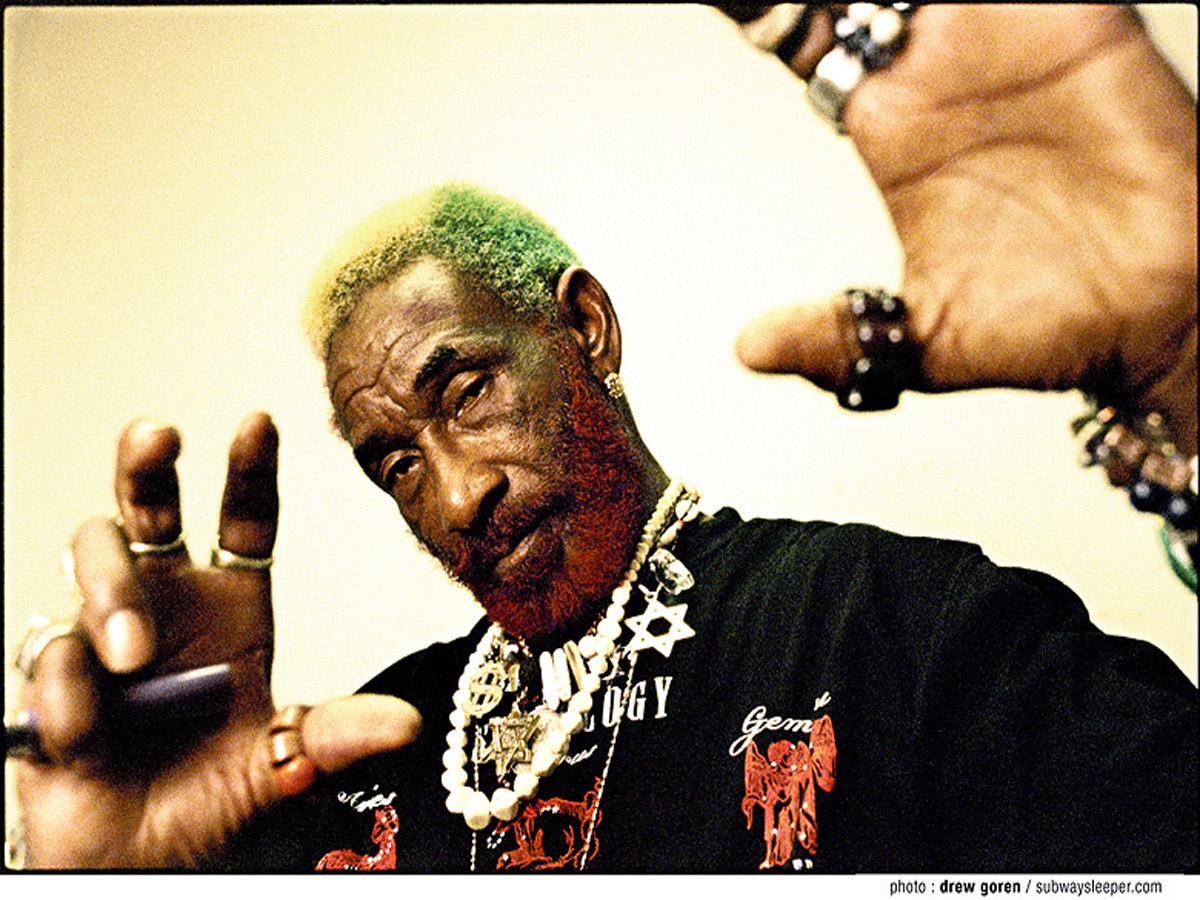
Lee Scratch Perry. Image courtesy of Ariel Publicity
When it comes to the back catalogue of the recently departed and much missed HHCL its easy to reel off the famous stuff the agency made over the years from Tango Slap to Pot Noodle's Slag of all Snacks but I thought I'd draw attention to some of the less famous stuff that I love. This isn't easy because most the work predates You Tube and so only exists where fanatics have uploaded old ads, but there is some stuff there to enjoy. First up is a campaign for Guiness in Ireland and about the launch of Guiness Extra Cold from the early part of this decade.The Guiness Extra Cold work is a great example of top quality thinking from the planner (I think it was Dave Cobban now the Planning Director of Wieden's in Amsterdam but I could be wrong) and then an inspired creative solution from Creative Director Jay Pond Jones.
The thought was that 'Guiness Extra Cold was a few degrees out from ordinary Guiness' which led Jay to the dub reggae legend (and inventor of the 'scratch' turntable effect) Lee Scratch Perry whose life and reputation is anything but ordinary.
It shows that a proper strategic idea doesn't emasculate creatives but helps them take a real leap away from a linear creative solution into the realms of the magical.
How easy it would have been to have written a strategy about Colder Guiness, and how dreary.
I think looking at them now I could do with a little more of a product focus but on the other hand its a campaign that ubderstood the demads of content way before most people were thinking about creating content properties.
There are loads of ads in the campaign, so here are just a few for you to enjoy.
And for a bit of Scratch at work here is a clip from a Jules Holland programme in the mid '80s.
A new golden age for radio?
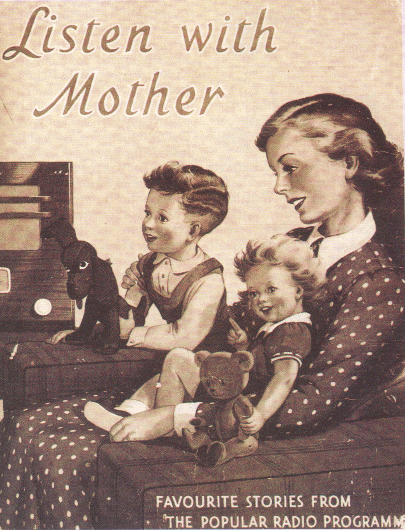
Listen with mother - backbone of the BBC light programme schedule form 1950 to 1982.
If there is an orthodox medium that has been given a shot in the arm by new technology it has got to be radio (not Last fm and all that marlarkey) but good old gardeners-question-time type wireless.
Radio is in robust health in the UK, most especially the BBC which has recently seen both reach and share of listening hours increase and part of that success is down to new means of distribution, particularly digital TV and the internet.
So it was nice of those people at RAJAR to put together some charts on all of this when they released the lastest figures for radio listening recently.
According to these figures listening to the radio via the TV is storming ahead. 41% of UK adults listen to the radio with a digital TV, a figure that has more than doubled in the last 4 years, while 1 in 5 listen once a week or more. Incidentally this is one of the reasons why Sky launched their gnome product which allows wireless listening to your Sky enabled TV.
Perhaps surprisingly TV is ahead of the internet for listenership with 24% of UK adults listeninng online and 13.4% doing so at least once a week While just 8% of adults have so far listened to the radio via their mobile phones.
There also is some other interesting stuff on penetration of DAB and of MP3 players (now at 27.3% but with growth slowing) and the proportion of MP3 owners listening to podcasts.
More grist to my belief that agencies need to stop bundling together the TV and radio craft discplines and create a separate sound design practice to give this means of communication the respect that it clearly deserves.
Download the RAJAR presentation here
Ethnicity - adland's forgotten mission

There is only one creature more obsesssed with shiny new things than the marketing community. Image courtesy of Amkhosla.
At the Future Marketing Summit I talked about the way people in marketing exhibit acute neophilia - a love of the new.
This is all well and good, but a the result of this is that we charge in to new places, spaces and technologies without the slightest idea of what the rules are, whether they add value to our client's business or critically whether we are invited.
And then we get bored and forget about it transfixed by the next new thing.
And what happens is we over estimate the short term impact of new things and underestimate their long term impact (e-commerce, PVRs, web 2.0, social media, China and the like). Incidentally Ray Amara calls this behaviour the first law of technology.
I call it marketing's Attention Deficit Disorder.
And one of the things I worry that we got bored of and which could have had a far more significant impact on real people, is ethnicity.
Time was that advertising was held up as a paragon of virtue when it came to the representation of ethnic diversity, particularly in the UK.
Only five years ago ad people couldn't move without being invited to ethnicity forums to talk about the way in which advertising was helping to mainstream diversity.
It was all a bit bemusing because we weren't really used to being the good guys. Remember this was shortly after the less scrupulous people in the business had desperately tried to preserve the right to advertise tobacco and this had cast a shadow over the ethics of the entire industry, and still does.
But five years ago it felt like real progress was being made, specifically in the casting of non-white artists in principle roles.
In part this was because a number of agencies at that time (like HHCL and St Lukes) had strong liberal agendas. HHCL even won an award from the Commission for Racial Equality for its 'token black man' ad for egg, the online bank.
Sure there were still issues and inconsistencies. Ethnic casting was getting better but decisions over ethnicity were taken in pre-production so scripts weren't written about the lives or experiences of black or Asian Britons. At HHCL we caused a stir with our 'arguing Asian couple' ad for AA Insurance, but the truth was that the decision to make the couple Asian was taken quite a long way down the line. Much of this was because of the ethnicity of people working in advertising which is catastrophically unrepresentative of the population.
And we have to admit that egg and the AA were exceptions in the normaility of the products. Ethicity was a category specific issue and you were much more likely to see non-white people in ads for trainers or sports drinks than for cars or washing up liquid.
Then the pace of progress slowed to a halt. If you look at our screens these days you'd still get the impression that Britain was a white country, even in London where a third of the population are not white.
It's as if we all just got bored and something else new and shiny caught our attention. For some reason we are far more interested in whether our brand has a store in Second Life or its sodding carbon footprint of than whether its communications recognise the diversity of its customer base. Few clients have a grip on the ethnicity of their customers, research is still done mainly amongst white people (because white recruiters like recruiting white people), ads are almost always created by white people and 99 times out of a hundred they feature white people.
As a result Ad Britain looks far too much like the 1950s.
All we are left with are ill conceived parodies of black Britain like the ghastly work for Trident chewing gum, thankfully now banned by the ASA.
Sorry Mum
I know I seem obsessed with Persil.
But here is how to make proper Dirt is Good advertising rather than the tat on our tellies. It is for Ala Omo, which is the equivalent of Persil in Argentina. It works because it turns the intellectual concept of dirt being good into something very tangiable and visceral, it is advertising that you become involved in rather than advertising you view. The endline is interesting too, it translates as "What they learn stays, dirty goes away".
And guess what you are going to think every time you are about to bollock your kids for getting grubby? "What an arsehole I am".
If you click through I have put up an English translation. If you don't speak Spanish I recommend you read it first.
Thanks to Adstructure who posted the ad and translation and put me onto this.
Come on BBH sort it out.
Sorry mum,
sorry mum,
I got dirty
I didn’t even notice
Where was my head?
I was distracted saving human lives
Feeding my daughter
Your daughter
Your grand-daughter, mum.
It happened while I was helping others
Leaving behind illogical fears
Here, I got dirty learning to have ideas of my own
Here, learning not to be selfish
To interact with others
Playing like this helped me
To notice how important is to help others
to not quit in the face of trouble
Sorry mum,
Getting dirty I reinforced my self-esteem
So in future I won’t let anybody
Carry me away.
You already know it
Mum, do you forgive me for getting dirty?
It wasn’t a very mature thing to do.
I promise you…
I promise you that I will do it again.
What they learn stays,
dirty goes away.
Ala (the equivalent to Persil)
Dirt really is good
 Image courtesy of LalliSig
Image courtesy of LalliSig
Poor old Dirt is Good.
Everyone is turning against it - especially in the planning fraternity.
And why? Well it stands accused of the most heinous crime - it doesn't work.
It may have strategist's hearts a flutter but it is not shifting detergent - certainly in the UK.
Well I want to ride to it's rescue and suggest the problem is squarely with the advertising. Not the executions but the role advertising is being asked, or has elected, to perform.
And I want to round off with the contention that 'advertising is the new below the line'.
The latest barrage against Dirt is Good (DiG) came from the legendary Charlie Snow, planning director of the singing agency DLKW.
In an article for Marketing Magazine in the UK he wrote:
"I'm starting to build real doubts about the whole campaign. The evidence is stacking up against it. In all the research groups I've attended across the country in the past few years, I've certainly never heard anyone mention the fantastic Dirt is Good campaign. The brand's cut-through is being questioned, and if the share figures are to be believed, both value and volume have hit spin cycle"
Sales of Persil are in decline in the UK, on this very blog John Lowery has quoted a volume share decrease from 26.6% to 21.8% and a value decrease from 26.8% to 23.3%, over the last three years. And few planners have evidence of people taking this idea to their hearts out there in consumer land.
Surely it is time for Persil and Omo to ditch the dirt.
Well, I'm not such a fair weather friend of DiG - I still think that it is a wonderful strategy.
The Unilever website tells us that "The campaign was created to communicate the Persil brand's philosophy that children should be given the freedom to be creative – which leads to their learning and development – without worrying about getting dirty."
And as a parent of two pre-schoolers that is spot on for me. I know I need to let them get messier but that my overwhelming parental instinct is to minimise mess. So I want Persil to succeed - for me and my childrens' sake.
That is why I remain rock solid behind the strategic intent of Persil/Omo, it is the advertising I want to question.
Much has been made of the deficiencies of the creative work on DiG.
While it has got considerably better in its new home at BBH, in the past it has been overly dependent on a vignette style of advertising, which is what you do when you can't think of a creative idea. While I can't help feeling that the ads have lacked real emotional depth and so don't find their mark in the customer's heart - in other words the emotion is all on the screen not in the viewer. Still more evidence comes form the difficulty in finding the work online - its not exactly the toast of you tube.
But I'm not sure that a big brand film is what the TV should be doing for Persil.
All to often the temptation with TV is to provide a window on the whole brand idea. After all isn't that the heritage of great and hugely successful TV advertising, like CDP's classic Hovis?
But in a communications landscape that offers so many more ways and places for brands and people to engage in dialogue, TV may not always be the best medium in which to do the brand thing.
I would argue that the other stuff that Persi/Omo does, online and in people's lives are both better executed and better ways to make an idea like this come to life. There is the wonderful unitedkingdomofdirt microsite (with its 30 things to do before you are 10), a Corporate Social Responsibility programme built out of DiG, tightly knitted in promotions like the splat balls and a PR machine turning out stuff on play malnutrition. It is in these places that the DiG idea finds its most involving expression, not the TV ads.
So what I am really questioning is the role that the advertising has been given to deliver. Maybe it should be used in a far more focused way than dramatising the brand idea. And maybe in doing this Persil and its agency would start to resolve some of the concerns about efficacy. And I think the focus for advertising should be on the brand's promise.
You see, in my model of problem, position, promise and brand idea - the one I have been peddling ad nauseam, there is not only a requirement for the brand to have a point of view but for it to deliver a promise as well. This proves to the consumer that the brand is doing something about its position. And the reality is that while Persil delivers the position in spades in its advertising, the promise (that no matter how dirty they get Persil will get them clean again time after time) remains tacit and unsaid.
I know that focusing the advertising on the efficacy story doesn't sound sexy and will have creatives sobbing into their lattes but these days we have to be more disciplined about the tasks each communications discipline is asked to undertake.
And in this case I think advertising's job is too sell while other's build the DiG brand world.
And isn't that interesting. As a commerical endevour advertising's primary responsibility will always be to sell - whether immediately or over the long term. So maybe we will see advertising swapping places with some of the other disciplines (especially a brand's online experience) and take on a traditionally below-the-line mantle. In other words advertising will be at the sharp end of sales and digital, promotions, and PR doing the brand thing.
Just because there is a little confusion over the precise role for advertising on Persil, that may be causing a sub optimal performance, doesn't mean the idea is wrong and Unilever should just walk away from it as many of DiG's detrators seem to suggest.
Or are we saying that a strategy is only as good as the work the present agency of choice is able to rustle up?
Rumsfeld on the future of advertising
 Donald Rumsfeld at Princeton in the '50s because I couldn't bare to defile adliterate with an image of the man as we now know him.
Donald Rumsfeld at Princeton in the '50s because I couldn't bare to defile adliterate with an image of the man as we now know him.
I have started quoting Rumsfeld rather a lot.
Not the quote "I would not say that the future is necessarily less predictable than the past. I think the past was not predictable when it started" nor the outstanding "Death has a tendency to encourage a depressing view of war." Neither of these are much use in charting the un-navigated waters of marketing communications.
But this one.
"There are things we know we know. We also know there are known unknowns; that is to say we know there are some things we do not know. But there are also unknown unknowns -- the ones we don't know we don't know."
You may pour scorn on him mangling our language and scrambling our brains but its sheer genius.
Or at the very least it helps articulate the relationship between advertising and digital agencies and their practitioners.
Clearly both parties know what they know about the other discipline. This knowledge may be clouded by prejudice, inadequate understanding and half truths on both sides but of one thing I am certain, I know what I know about digital. And of course those people in the digital space that hail from advertising have a more complete knowledge or what we do - albeit frozen in the late '90s.
And we are starting to figure out the stuff we know we don't know and making up for this through an ongoing talent swap. Advertising agenices are falling over themselves to attract digital parctitioners into the fold. Partly in the belief that the whopping great salaries that are on offer are a damn sight better value than the multiples they will have to pay if they try to buy the agencies these luminaries work for. And of course we are also seeing digital agencies bringing in strategic and production talent (particularly in TV) from the ad agenices where these skills have been honed over decades.
What fascinates me, however, is stuff that we don't know we don't know.
The more people I meet with, talk to and argue with from the digital side of the divide the more I realise that the real issue is I don't know what I don't know - and I suspect neither do you.
What I mean is that if you work in an ad agency exploration of the digital world is like playing a computer game where the map or terrain only becomes visible as you visit it. Every day I gain a better understanding of digital, and often about things that I previously had no idea happened or were important.
Of course few people on either side of the fence will admit to their lack of understanding but for me its a rather liberating idea. Instead of starting the conversation on the basis of the stuff you think you don't know about and need to have some help with, you start it in a spirit of complete openess. help me understnad the things I don't know I don't know.
And maybe it is a philosophy we should apply rather more often to the process of building strategy, particularly in pitch situations.
Thanks Donald. Shame about Iraq, but you have certainly helped to put my head straight.
I'm now off to wrestle with the stuff I don't know I know.
The most important search engine is in our minds

A laboured analogy for the way search engine marketing works. Image courtesy of Glennfinlas
People are very keen on search these days.
Whether Search Engine Optimisation (SEO) or Search Engine Marketing (SEM).
It is not much of a business to be in (since it is becoming rapidly commoditised) but it's something every business should be into.
However, my view is that SEO and SEM should be viewed as a safety net and not a marketing panacea.
A recent comment suggested that search had replaced TV as the number one priority on the marketing plan.
This made me sad.
Sad that this assertion wasn't backed up with some evidence and sad because I'm not sure the obsession with search is altogether healthy.
Don't get me wrong, the TV thing is neither here nor there. I seek neither to fetishise nor demonise TV since both positions bore me rigid. No, it is the idea that if you are optimised in search all your problems will go away.
Search seems to do two things for a brand.
It gives you visibility in the natural searches that people make for terms that relate to your business and the services it provides.
And it gives you ownership of your brand name online if people decide to search you out.
Both of which strike me as hideously passive activities.
The first is remarkably random, a shit fight with all of your competitors to climb to the top of natural or paid for search around terms losely associated with your business. The whole endevour resembles a flock of seagulls following a plough in the hope of some juicy worms. And how many search terms is enough search terms?
The latter is a no brainer but its efficacy is rather dependent on whether anybody can be bothered to look you up.
Both are necessary but neither are sufficient.
The reality is that search optimisation of either colour should be seen as a safety net for a brand. It should be working as a final attempt to secure the attention of consumers if everything else has failed. But it is far better (and probably rather cheaper) if people approach their browsers with your brand already in pole position in their mental search engine - already ahead of the field because people know more about you and they care more about you.
That instead of searching for low cost air fares to Barcelona they are looking up BA.com or Travelocity.
And instead of searching for vehicle recovery services they are searching for the AA
And instead of searching for cheap home insurance they are checking out Norwich Union (yeah right)
After all how many of us search for 'book sellers' on Google rather than going straight Amazon?
Any monkey can buy up some search terms but the real value that marketers can add is making us care about the brand in the first place.
That's what we might call brand optimisation.
And thats what I want to do.
By the way for a more helpful and considered point of view on the role of search try out my favourite brand search consultants Hayward Carbery.
Digital and TV sitting in a tree K.I.S.S.I.N.G.
 Image courtesy of Jaki Good
Image courtesy of Jaki Good
People tend to rather bang on about the death of the 30 second television commercial.
It is unclear which bit they hate the most, the 30 seconds, the television or the commerical.
Obviously I am a big fan of the commercial element, I like being commercial.
I'm still rather unsure about the television component of course. I think that we have to accept that the potency of commerical messages added to the broadcast stream is being significantly challenged - by technology, by consumer behaviour and by media fragmentation. That said there is plenty of evidence that telly is in rather rude health at the moment - time shifting may spell trouble for advertisers but it is making TV a rather more enjoyable pastime. Indeed Nielsen have recently reported that in the 2005-2006 season television usage hit an all time high in the US at eight and a quarter hours a day.
But today I want to have a go at the idea that somehow creating 30 second bursts of 'broadcast' communication is at best moribund and at worst sexually deviant.
I want to argue that while digital media are beginning to offer brands an unparalleled means of immersing consumers in rich and often interactive brand experiences there is nothing quite like the 30, 40 or 60 second blast of message and meaning that comes from what we used to call a television ad.
Don't getting your knickers in a twist that they are linear in form and that they represent the brand in 'broadcast' mode - sometimes brands and consumers both need that. And sometimes it does the digital experience no end of good into the bargain.
I will stop going on about the Old Spice campaign shortly. But I strikes me that the reason that I persevered with the whole online experience was because I got what they were up to. And I got what they were up to because I had been subjected to their ad, once on a blog and once on the Old Spice site. In 60 seconds a single linear, non-interactive ad had primed me to forget everything I understood about a brand, put aside a truck load of cynicism, deployed a brand idea accurately and delivered up a brand personality all of which are essential to 'getting' and sticking with the online experience. Oh and I laughed too, not bad for 60 seconds work.
I think the PC and Mac ads work in a similar way. In the UK Apple have celebrated the launch of Windows Vista by reworking their combative US personification of PC and Mac with the comedians Mitchell and Webb.
Its not entirely clear why this was necessary as we Brits expect Mac to have a US 'accent' as provenance is part of the Apple story. Any road up here is a brand famous for design led communications that said little but made you feel good, resorting to good old didactic advertising that lands a punch with every outing. Our relationships with the Apple brand are extremely rich and complex but sometimes there is a place for communications that tell it like it is. And the added twist is that the regulatory environment in the UK prohibits these ads being shown on TV and so the promise of seeing them at all is being used to draw people to mac.com where the viewer can be subjected to the full on charms of Apple's online experience.
In a way short form ads, however they are delivered, are working not as a window onto the entire brand (like say CDP's classic Hovis work) but as the brand's storm troopers - going in fast and executing a specific task with ruthless efficiency. A sort of primer for the online experience to come and which promises to explain it all in more detail.
Ads do what digital experiences are poor at, delivering quick, accurate and often emotionally rich communications. Digital does what ads are bad at, immersing the consumer in the brand world and facilitating two way conversations between people and that brand.
Time to stand up for the 30 second commerical even if you are may be more likely to see it online than on the telly and time to recognise that ads and digital enjoy a marriage made in heaven.
A kick in the teeth for LIP
 Image courtesy of Stephanissimo
Image courtesy of Stephanissimo
Call me old fashioned but I like a nice bit of rational communication. I think that if you set out to persuade people of your brands qualities and point of view you ought to do just that, persuade them.
This requires active engagement from people towards the brand or communication, not just their passive attention.
However, in recent years, this model has been significantly challenged by the Low Involvement Processing school of communication.
And I began to think that I ought to raise the white flag on rational persuasion, especially as a superficial reading of some of the stuff coming out of cognitive neuroscience seemed to endorse LIP.
Not any longer I don't.
I had the pleasure of enjoying Millward Brown's hospitality last week as they presented some of the conclusions they have drawn from recent developments in cognitive neuroscience for the world of advertising.
They have been working with Jane Raymond (Professor of Experimental Consumer Psychology at the University of Wales Bangor) to understand what this scary new world might mean for us.
It turns out it might be good news those of us that believe in active persuasion.
Apparently the brain is organised into a hierarchy of specialised modules, at the top of which are three mega modules which represent information according to their specialism. Roughly they relate to Knowledge (concrete information associated with an object), Action (the actions that we associate with an object) and Emotion (the value of that object to us).
When required, information from these three mega-modules is integrated in the Mental Workspace. This is where we do our 'thinking' - when we are conscious of things, make decisions, place thinks into our long term memory, build further associations and control our voluntary actions. In other words the kind of stuff we want to happen as the result of communications.
But for this to take place information has to gain entry to your Workspace. And access to the Workspace is chronically limited - we can only think about 3-4 things at once less when it comes to more complex ideas. Incidentally at long last we have some proof that the hoary old Creative Director cliche about tennis balls may actually be true.
With information competing to be the subject of attention we must filter our the less relevant stuff. And as a result we sort information into four categories:
Attended - stuff that gets into the workspace to be acted on and integrated.
Passively ignored - stuff that is not in the workspace but ready to enter. It can enter the workspace quickly if required but if it doesn't its behavioural effects will be short-lived and subtle.
Actively ignored - stuff we must ignore as it is actively irrelevant and distracting to the task at hand. This is important because we emotionally devalue this information, causing negative reactions when we next come across it (a significant challenge for online advertising and urban spam).
Not registered - the vast majority of information available to us that is just edited out and therefore redundant.
If information gets through it then can be acted upon and a representation created - the currency of thought in the Workspace. Each representation has to have input from all three mega modules - knowledge, action and emotion and this process is what takes the time.
Indeed there is evidence that the whole thing takes so much time and effort that the brain literally 'blinks' having completed a representation which leads to attention blind spots. This has implications for the creation of linear communication like moving image or sound.
And this is the challenge to Low Involvement Processing. It is not that it doesn't exist or doesn't work, but that it is a cop out.
For us to do anything as a result of brand communication takes the brain to do a hell of a lot of work and uses up time and attention - time and attention that it could be devoting to other stuff.
It is our job to get people to devote scarce Workspace resources to our brand and its qualities and get our messages actively attended to.
If people do not actively attend to a piece of communication then it is left either passively ignored or actively ignored. In the first case LIP may help us but the effects will be subtle and short-lived. While if it is actively ignored you are just storing up problems for the future.
I know what effect I'd like my client's marketing expenditure to engender in consumers. You go low involvement if you want - I'm going to actively persuade them.
If you want to know more I'm sure the nice people at Millward Brown will let you in on their work (Graham Page is responsible for this aspect of their work) while ESOMAR carry the complete paper that he and Professor Raymond presented at the ESOMAR congress last year (payment required - how open source is that?).
We are all doomed
A while ago I stole a chart from the planning chief at Grey, John Lowery, and posted it. Well John can't have been too miffed as he has updated it for the 2006 data and sent it over. If you work in advertising (like me) the message is blatantly clear.I should probably say that this is data from the very wonderful TGI and they will probably ask me to take it down. But maybe if they realise that this is as blatant an attribution as I can create and you are all potentially extremely valuable clients for them they will be nice and give me an opensource break.
I'm in love with IPTV

Men of the London Rifle Brigade meet the enemy in no man's land, Christmas Day, 1914 - the Christmas day truce between German and British soldiers at which fraternisation and football were the order of the day.
Sometimes, just sometimes people who are normally at each others throats lay down their arms and come together in a spirit of unity and common purpose
And so it is with WPP conferences, especially those organised by David Muir, a man that in the parlance of the time 'gets it'Last thursday David pulled together the tribes of WPP for a conference on Internet Protocol TV, which basically meant he dragged some of the brightest coolest people inthe IPTV space into a posh hotel for the benefit of dullards like myself to get up to speed with this stuff. That in a stroke is why WPP is a holding company Jim but not as we know it.
Anyway I'm now officially in love with IPTV as you should be dear reader. Not just the narrowcast distribution of content to our TVs (including addressable advertising - very exciting) but more significantly perhaps broadband TV channels working so far down the long tail they can monetise audiences that are smaller than people in the UK that admit to voting Tory (our Republicans).
If you are interested heres a bunch of stuff to get you going.
For one of the best examples anywhere of brand based IPTV visit Go Beyond TV. This is Land Rover's IPTV channel - part licensed content from Discovery and part self generated content.
At Barrio305.com you'll see an IPTV channel built round an audience not a brand - but well on its way to being a significant brand in its own right amongst Reggaeton fans in the Spanglish speaking world.
For a really simple example of IPTV you could do worse than taking a look at Momme.TV - delivering what is often user generated advice to mums and mums to be.
Jump.TV on the other hand doesn't actually create any content itself, but rather repackages ethic TV for migrants, immigrant communities and business travellers who crave a bit of home.
And these days its as easy as blogging frankly. Sure you could built the tech yourself as Go Beyond TV did but its far easier to pop along to Brightcove.com and set up an account. Brightcove provide the back end for loads of these channels delivering the site and handling the ad income if yours is an ad funded model.
The hard bit is the idea and the content.
Thats where we come in dear readers.
Truce over.
What do advertising agencies do daddy?
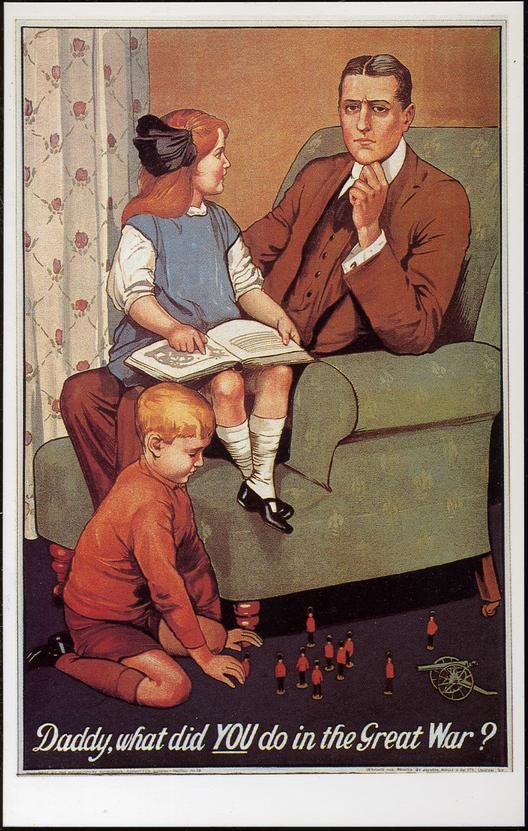
Central though brand ideas are to the value we create for clients, advertising agencies have to be more than just idea shops. Ideas without expression serve very little purpose. Ideas have to reach the consumer in engaging and persuasive ways and that involves the agency actually producing something. However, it is high time that we defined the craft product of our agencies by the medium in which we work rather than the media by which it is distributed - TV, press, outdoor, radio, online and the like.
So here is my starter for a spot of restructuring
I reckon there are four core mediums in which active persuasion may be conducted and that any self respecting ad agency of the future should be competent in.
I call the first film. In truth this is simply because I like the word more than the phrase moving image which is what I mean. This is not, I repeat not, TV production, it is the discipline of creating brand films for Clients and frankly it is immaterial how these are distributed. Some will be seen as interuptive ads on television, some as films on the Client's IPTV channel, some will be viewed on websites or downloaded to portable devices, some will be consumed on mobiles and others will form branded content in more traditional media. But as moving image begins to dominate the digital space we must recognise that the brand film is in rude health even if broadcast TV is declining in influence.
Then comes sound. In the old model when we defined our product by media not medium, radio was the bastard child of TV. Production Assistants did a spot of radio when there wasn't a TV ad to shoot. Well I think its high time that the sound design discipline was separated from moving image and the appropriate respect was paid to aural commmunication - whether this is distributed in store, on the radio, online, as podcasts or downloads.
All two dimensional design whether analogue or digital and where images are satic or simply animated should be part of one integrated design discipline. Print, posters, websites, packaging, identity, in fact anyplace where strong two dimensional communication is the order of the day will come under this remit.
And finally there will be a separate discipine focused on creating and contributing to conversations where the principle craft skill will be good old fashioned copywriting - crafting persuasive messages in simple, elegant and memorable ways. These converstions would evidence themselves in PR, online communities, brand blogging, long form copy on websites and brochures, you know just anywhere where words make the difference.
Just a thought, I might get on with it anyway.
CDP - the original new media agency
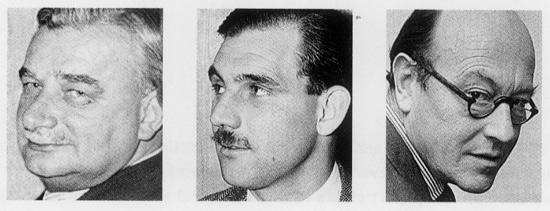 Collett, Dickenson and Pearce in all their venerable moustache wearing glory
Collett, Dickenson and Pearce in all their venerable moustache wearing glory
BBC 4 have a wonderful documentary on advertising they wheel out from time to time. It's called The Men from the Agency a looks at the contribution to popular culture (largely art and film) of four people who all worked together at CDP in the late '60s - Charles Saatchi, David Putnam and Alan Parker.
One of the most moving parts of the film is effectively an apology by David Putnam for the loose approach to ethics that dominated the industry right up to the '90s and revolved around the idea that it the product was legal it was legitimate to advertise it. This apology is significant because CDP were just as successful at selling fags as they were in selling everything else.
Of course today CDP is a shadow of its former self, but in its hey day it changed British advertising beyond recognition leaving a legacy that remained unchallenged until the likes of HHCL, St Lukes and Mother arrived on the scene 30 years later.
They constructed from scratch a definitively British approach to advertising that picked up the philosophy and approach of Bernbach and reinterpreted it for a Britain undergoing extraordinary social, political and economic change. For many people they and their descendants, agencies like Saatchis and Lowes, kept the Bernbach candle burning when it was almost completely extinguished in the US.
And in doing so they tamed two revolutionary new media - TV and colour print.
Though commercial TV had existed in the UK since the late 50s, CDP that made it work in an idiosyncratically British way - dispensing with sales and production techniques appropriated from America and learning a new approach better suited to British sensibilities - often experimenting by shooting commercials in the basement themselves.
Somewhat surprisingly quality colour print was even more of an emergent media in the late 60s than TV, pioneered by the Sunday Times Magazine which increasingly became a showcase for Collett's work - for Stella Artois, Harveys Bristol Cream and of course Olympus.
CDP 'got it', in as much as they understood the way people were changing and people's media landscape was changing as affluence rose and class structures declined in post war Britain.
It rather reminds me that, while many obsess that advertising is somehow wedded to specific media, in truth it is far more adaptable - jumping from media to media as their fortunes wax and wane in the consumer's lives and hearts.
And it often takes a new generation of agencies to achieve these paradigm shifts in the business with many established names and false hopes (those agencies that start up in the dying years of the old order but don't really get it) unable to adjust.
Just as in the late '60s advertising will emerge from the challenges that it faces at the moment. But it will emerge with a different set of agencies, skills and business models than those, though challenged in the '90s, that remain very much the same as when Saatchi, Putman and Parker left CDP.
And here is the seminal Hovis ad - it seemed rude not to.
And this book (as endorsed by the scary Paul Colman in the comments) tells the story rather better than I have:
Opinionated Advertising
Opinionated Advertising Opinionated advertising is a new idea about the role that advertising should play in the marketing mix and the form it should take. Implicit in this approach is a disdain for well branded entertainment and the language of...Advertising 'junk food' to children
Anyone in advertising who believes in its power has to be alive to the idea that a ban on 'junk food' advertising may now be appropriate. My issue is with the practicalities beyond the headlines. For starters what do we...Monopoly, magic and meaning - the enduring power of advertising
I am advertising's number one fan. Despite all the issues that its faces it still delivers three things to businesses uniquely well - monopoly, magic and meaning. This article is based on a talk to the UK Financial Services Forum in February 2005 about which marketing discipline should get the lion's share of the marketing budget and sets out this thinking. Download fileMonopoly, magic and meaning - the enduring power of advertising
In so many ways advertising is on the defensive.
For starters there is the proliferation of new marketing disciplines all of which add powerful new weapons to your armoury and demand that advertising share a little of the financial action.
That’s kind of understandable.
What is less flattering is the increasing degree of consumer disaffection with advertising. People didn’t always dislike the dark art, indeed way back in 1991 32% of all adults in this country believed that the ads were as good as the programmes. That figure is now languishing at 17% and has declined every year since the early ‘90s.
But to be honest this wouldn’t be a tragedy if we could guarantee that they were still paying attention. Who cares whether people like an ad as long as they are being communicated with? Well the bad news is that increasingly consumers are armed with technology, like Sky+, that allows them to fast-forward through the ads. Evidence from Forrester in the US suggests that 92% of all ads get zapped when watchced off a hard disk.
Sounds like we are up a certain creek without a paddle.
Well I’m not ready to throw in the towel just yet. Far from it.
At best advertising is an extraordinary business tool and I still love it. In many resects - and to paraphrase Kathy Bates in Misery - I am advertising’s number one fan.
And as such I want to introduce you to my 3 M’s of advertising.
Now I’d like to suggest that I have been working on the 3 M’s for the past 5 years and they are the centerpiece of a new book on marketing that is shortly to be published and is likely to make me rich and hugely famous.
But the reality is that I made them up.
Or rather I have pulled together three ideas about the potency of advertising and added a neat little alliterative twist. But hey I’m a planner and that’s what we do.
My 3 Ms are Monopoly, Magic and Meaning
These do not represent the sum total of reasons why you should advertise but what advertising can uniquely deliver.
First up I want to talk to you about monopoly or specifically monopolies of the mind.
One of the first things that Tim Parker did when he joined the AA last year was to declare his intention to return to the positioning and strapline of the 4th Emergency Service.
He didn’t do this because the 4th Emergency Service is more famous than the ‘just AAsk’ campaign that was running or because he thinks that it will lead to better creative work. He did it because he knows the power of the campaign to fight the commodity conditions that bedevil his category.
At present there are over 100 organisations that can furnish you with breakdown cover, a low interest category, where every provider is seen to offer the same service and where purchase decisions are made almost exclusively on price. It’s tough to maintain a premium service with a premium price in these conditions.
However, while there may be 100s of breakdown cover providers there is only one 4th Emergency Service. When advertising talks about the AA in this light it creates a monopoly in the mind – an idea about the AA that actively fights substitution and justifies a premium. Its not a real monopoly – few of us will ever be fortunate to run a business in these conditions – but an effective monopoly that fights against the forces of commodification.
Advertising’s power to create monopolies of the mind in commodified markets is one of the principle reason any business should be excited about it.
The second of my M’s is magic and advertising’s lack of predictability.
In the middle of the ‘90s I worked on Its Good to Talk for BT – you know the advertising that almost destroyed Bob Hoskins career. It was another campaign in a long and distinguished tradition of call stimulation advertising that included Busby and Maureen Lipman’s nightmarish vision of motherhood – Beattie. However the effectiveness of ‘It’s Good to Talk’ was in a different league all-together. For every pound that BT spent behind the campaign it delivered six pounds to BT’s bottom line. Both Its good to talk and Bob’s observations about male phone behaviour became part of the vernacular of the late ‘90s.
But for all the success of Its Good to Talk this could never have been predicted. Because great advertising literally goes out of control – or rather out of our control.
And this is what I mean by magic. The strength of thinking and creativity that goes into the best advertising is a magical multiplier. This magic is what propels the brand’s message out of the ad break - which you pay for handsomely - and into people’s day to day conversations - that cost you absolutely nothing.
I’d go further and say that increasingly advertising’s role in the media mix is to act as a catalyst that ignites conversations about the brands we all represent. Catalytic advertising is all the more essential in this category where few purchase decisions are made in isolation, without reference to other people’s opinions whether they are IFAs, journalists or your mates.
So celebrate advertising’s magic and its down right lack of predictability. For one thing it means that the size of your budget isn’t the only determinant of success – smaller brands can walk tall with a sprinkling of the second M.
The third M is meaning.
When James Murdoch arrived to run Sky his appointment stunned the city. Not only were they sceptical about his ability, his youth and his surname but critically his intention to stem the decline in subscriber acquisitions by massively increasing his adspend. BSkyB shares lost 20% of their value on the day he announced the plan last summer.
By close of business on the 31st December 2004 the plan was paying off. Sky had acquired 192,000 net subscriptions in 3 months. This was the first quarterly increase in 18 months, it compared with just 62,000 subscriptions in the preceding quarter and totally outstripped city expectations.
It was direct response press, mail, inserts and online activity, that converted the lion’s share of these new subscribers. However, in the final quarter of 2004 these tried and tested approaches had a different context to operate in. This context was delivered by an entirely new approach to Sky’s advertising – the ‘what do you want to watch?’ campaign.
This campaign gave new meaning to Sky for hundreds of thousands of digital resisters and added impetus to the harder nosed acquisition activity. In particular it turned its back on sports obsessed ‘ransom note’ advertising in favour of work repositioning Sky as a more female focused entertainment brand.
The point is that the meaning that advertising can give a brand not only delivers success in its own right but it creates a positive context for all the brand’s activities and a more fertile environment for the other marketing disciplines to excel.
Love it or loathe it, you have to respect the HBOS Howard campaign. Not only has it directly driven more customers to the brand more efficiently but the other marketing disciplines have successfully fed off it from the reduced cost per response for direct mail to more column inches for PR.
Critically it also galvanized an enormous organisation over a short space of time in a way that no other marketing discipline could match. In fact the best advertising for living brands such as yourselves arguably pays back before it goes on air. By giving the whole company a clear sense of direction, pride in what they do and a standard to live up to – by giving your brand meaning to your people.
So there they are my 3M’s – monopoly, magic and meaning.
These are the achievements that advertising can deliver to your business that the other disciplines can’t touch. Monopolies of the mind help decommodify markets, the sheer magic of advertising can deliver a disproportionate return on investment whatever your budget. And the meaning that advertising can create provides a context for all your organisation’s activities.
Yes advertising is under pressure. It is also one of the most adaptive business tools at your disposal and when its good – its very very good, doing extraordinary things for brands and businesses.
But here is the catch. You see what I have described – my 3Ms of monopoly, magic and meaning – are nothing more than advertising’s promise. They are what advertising does at its best. Whether your advertising lives up to this promise only you can tell.